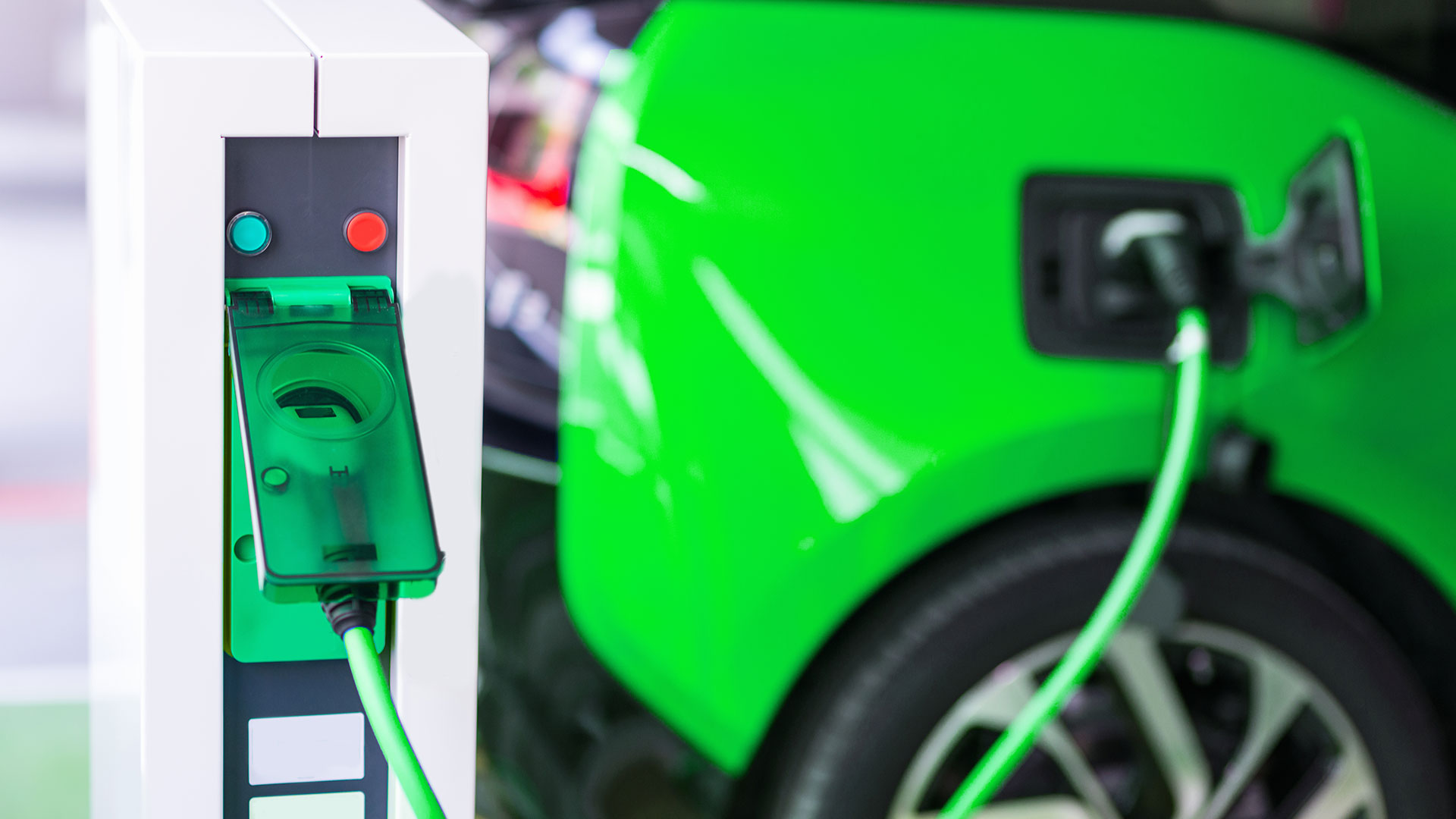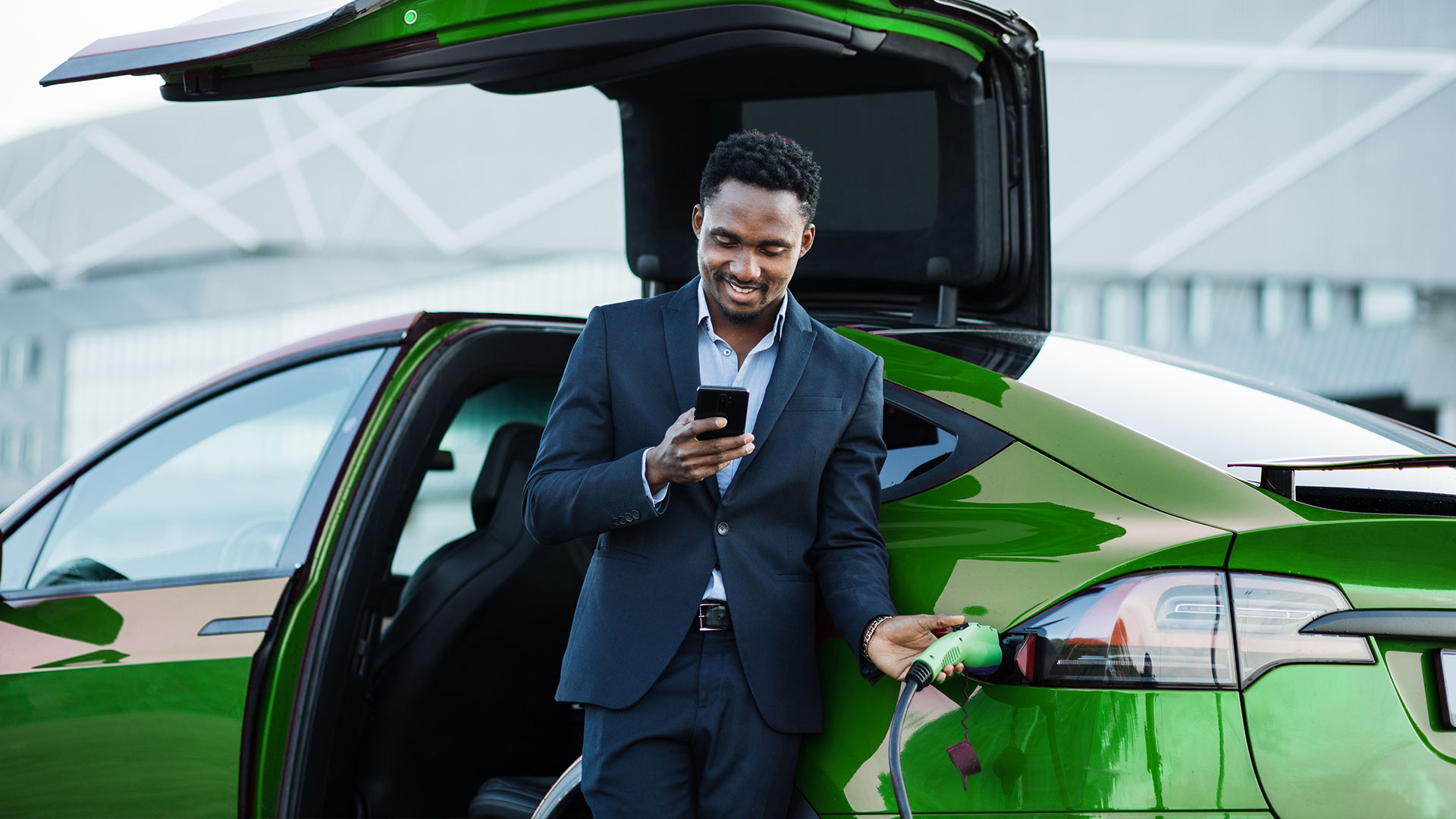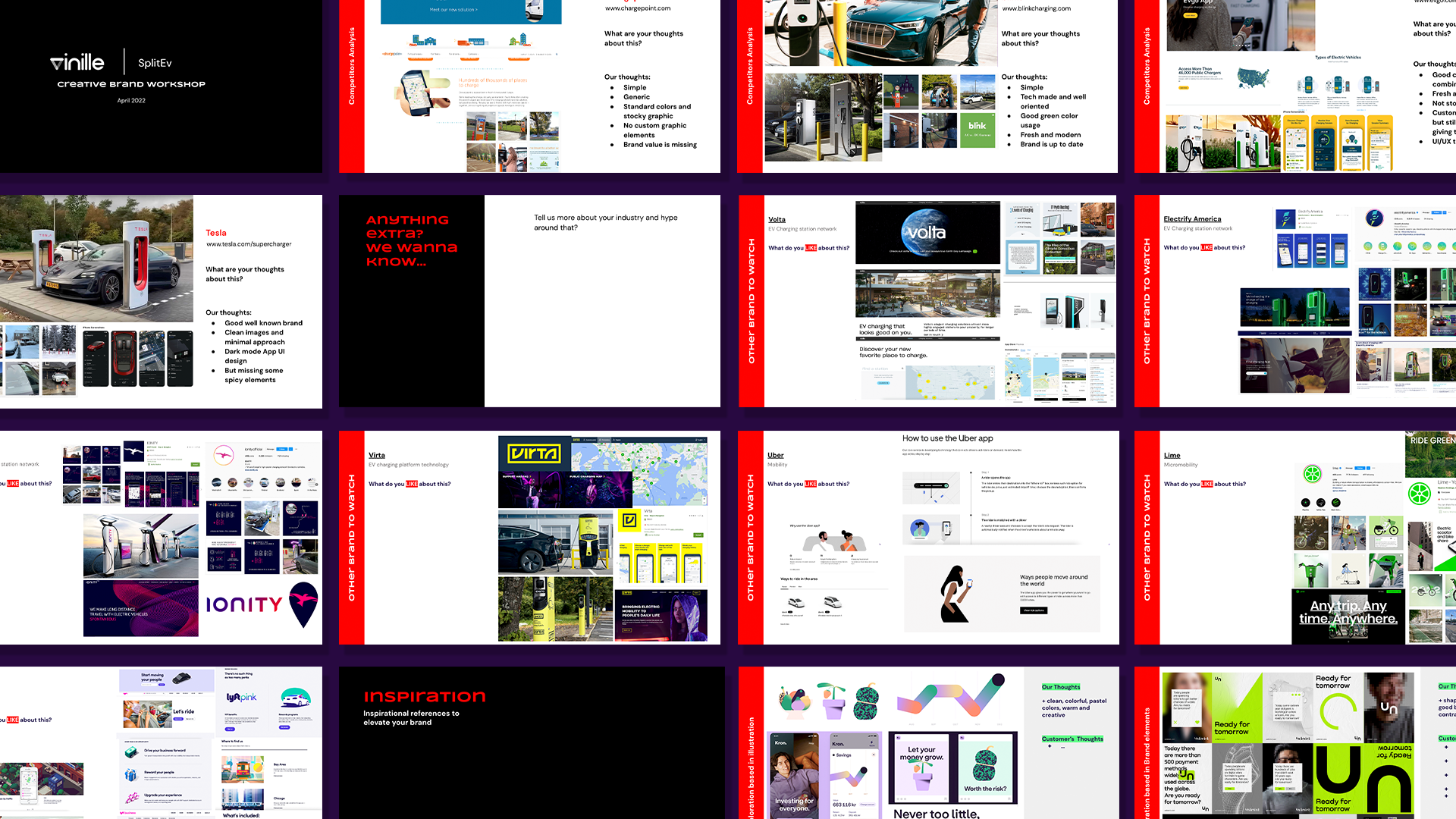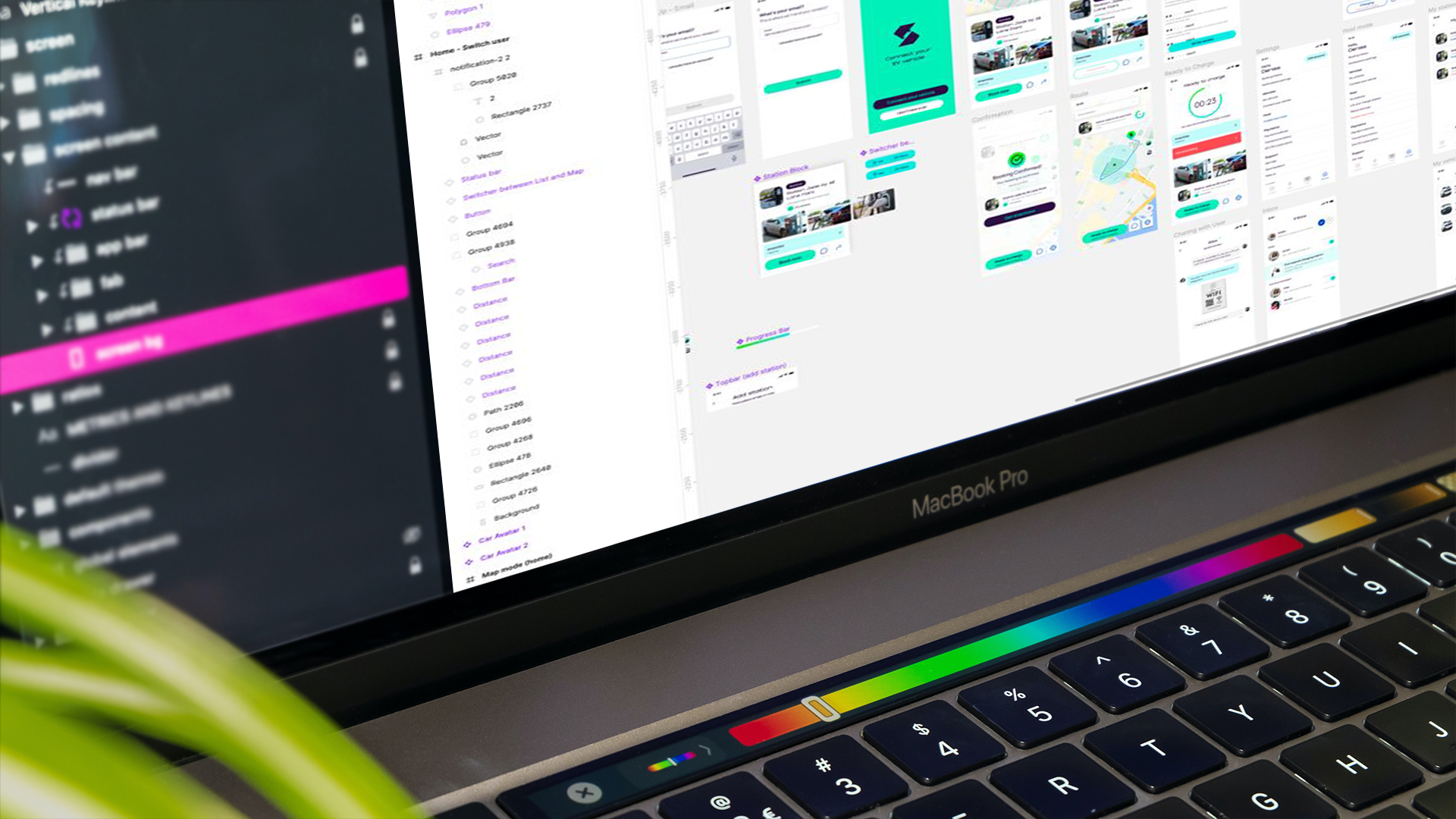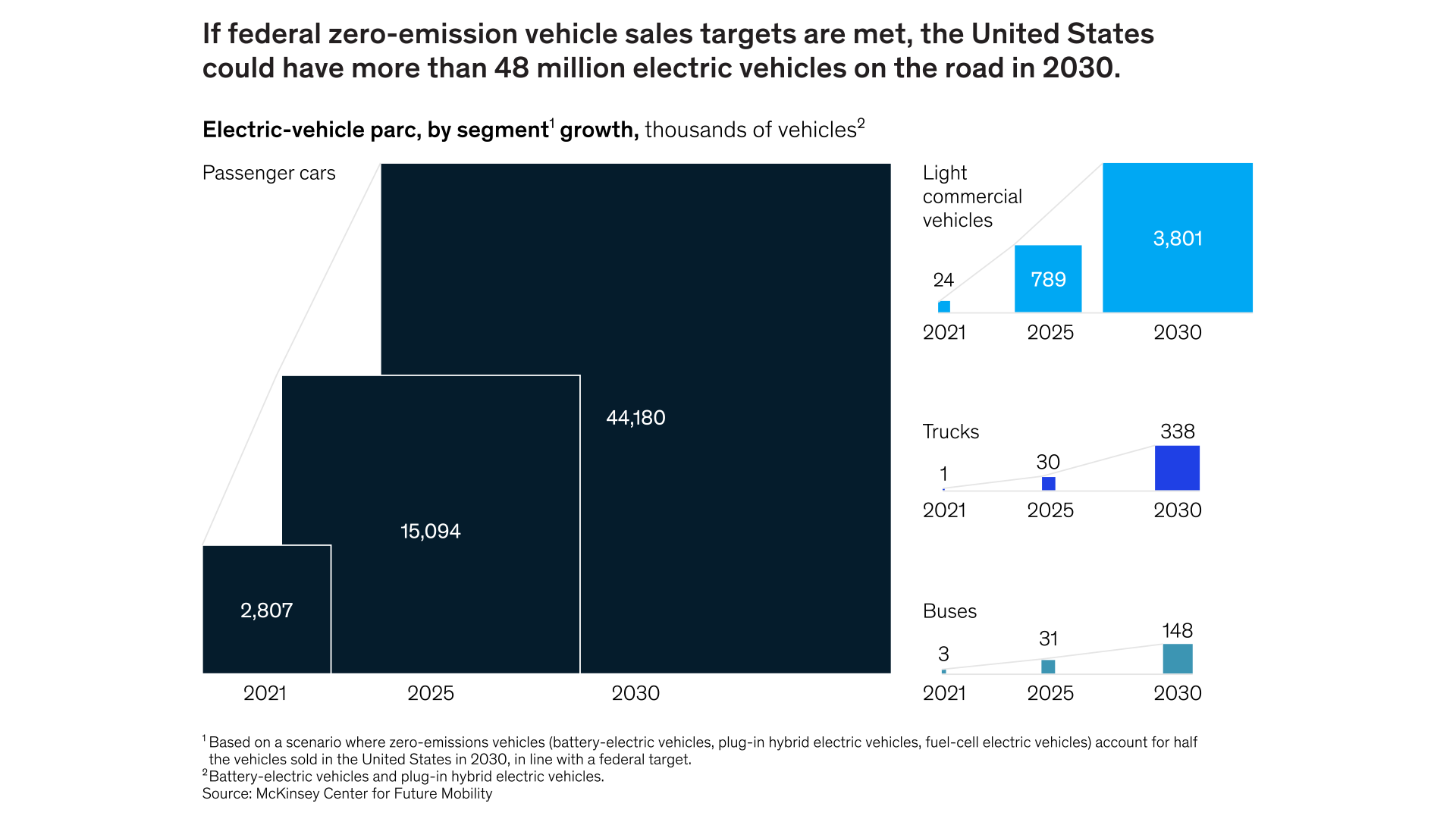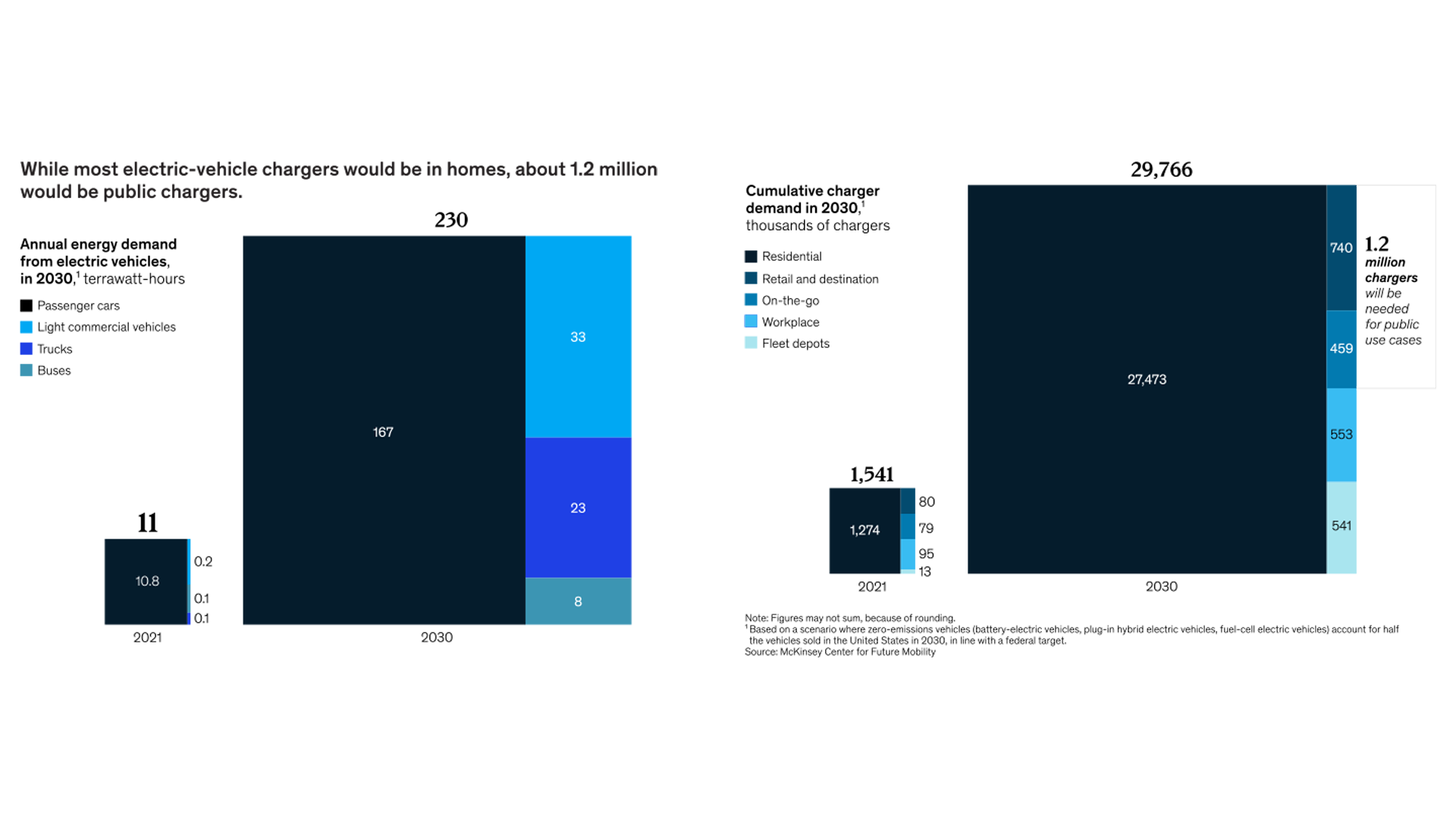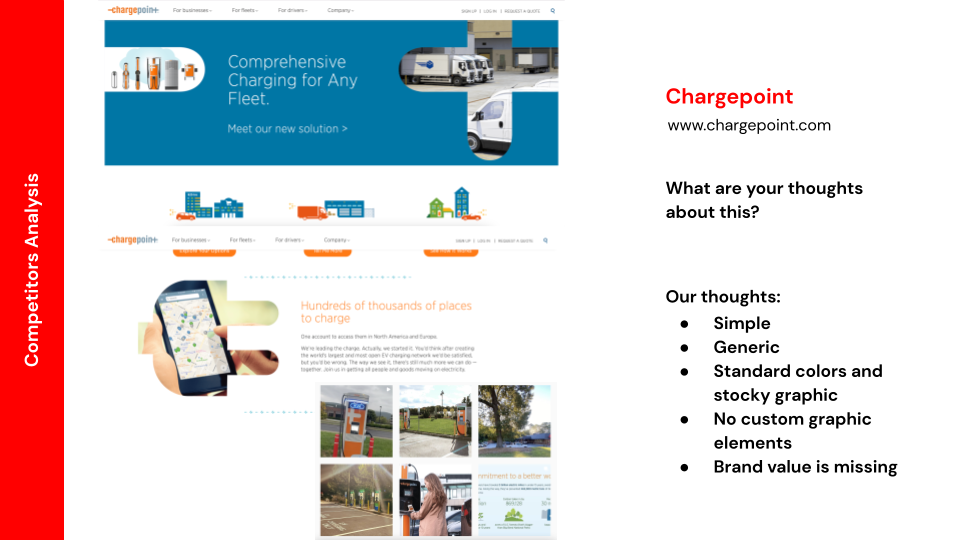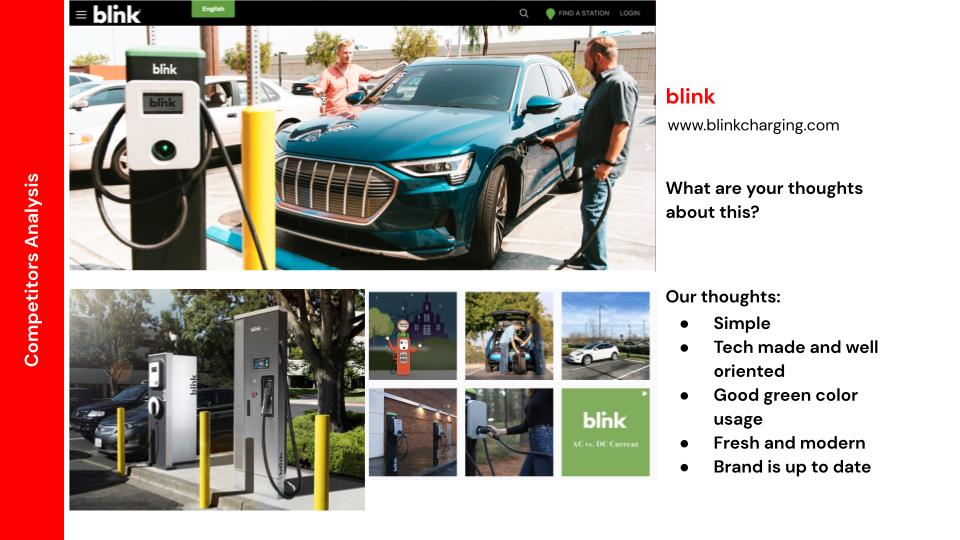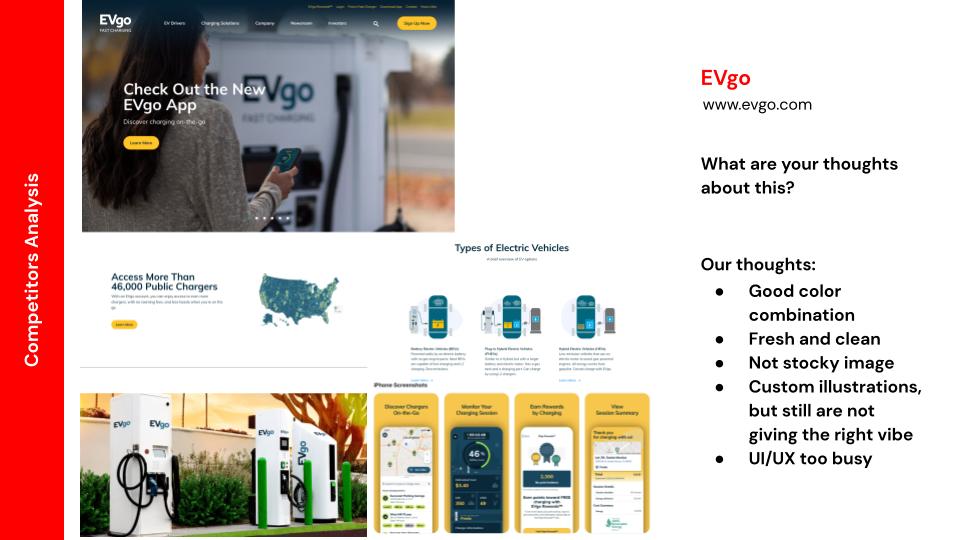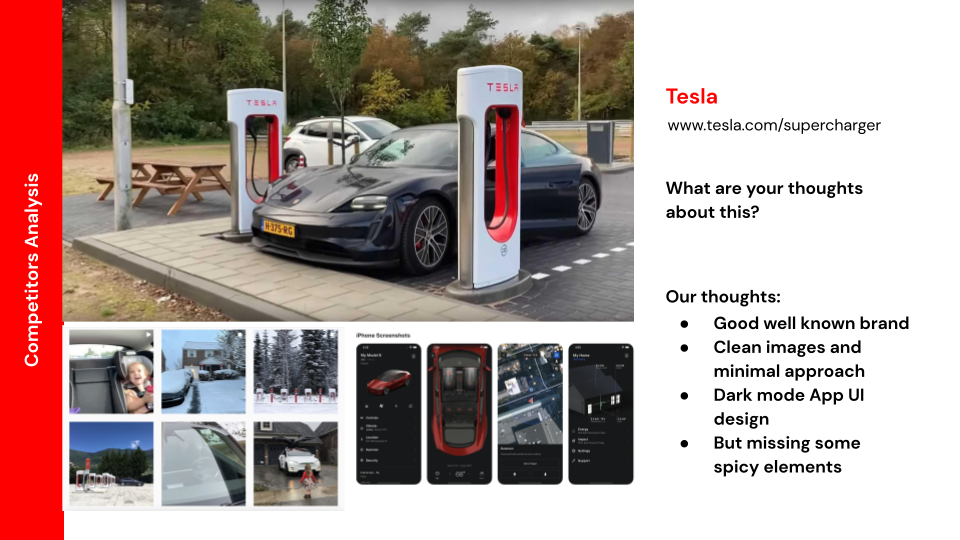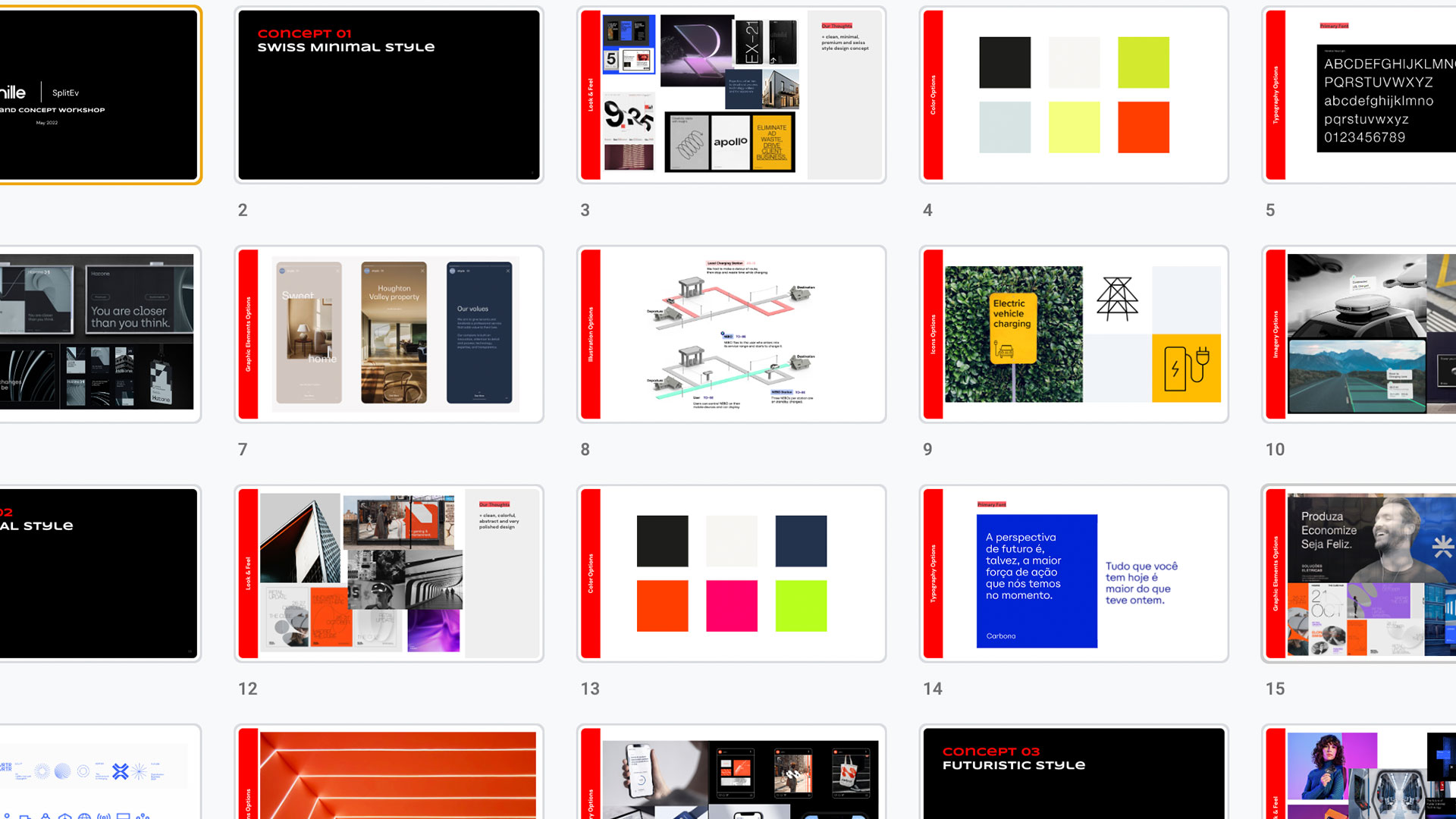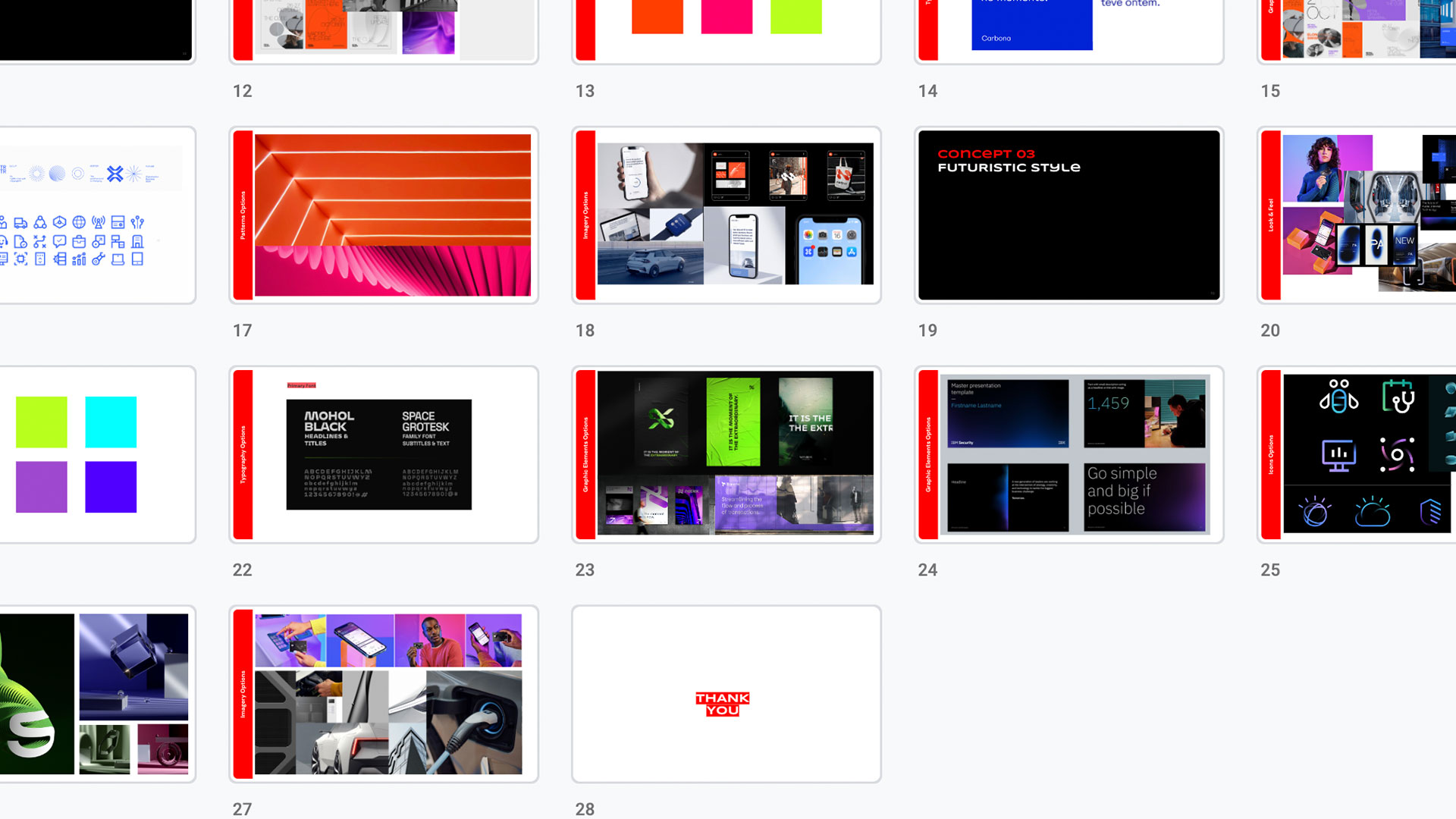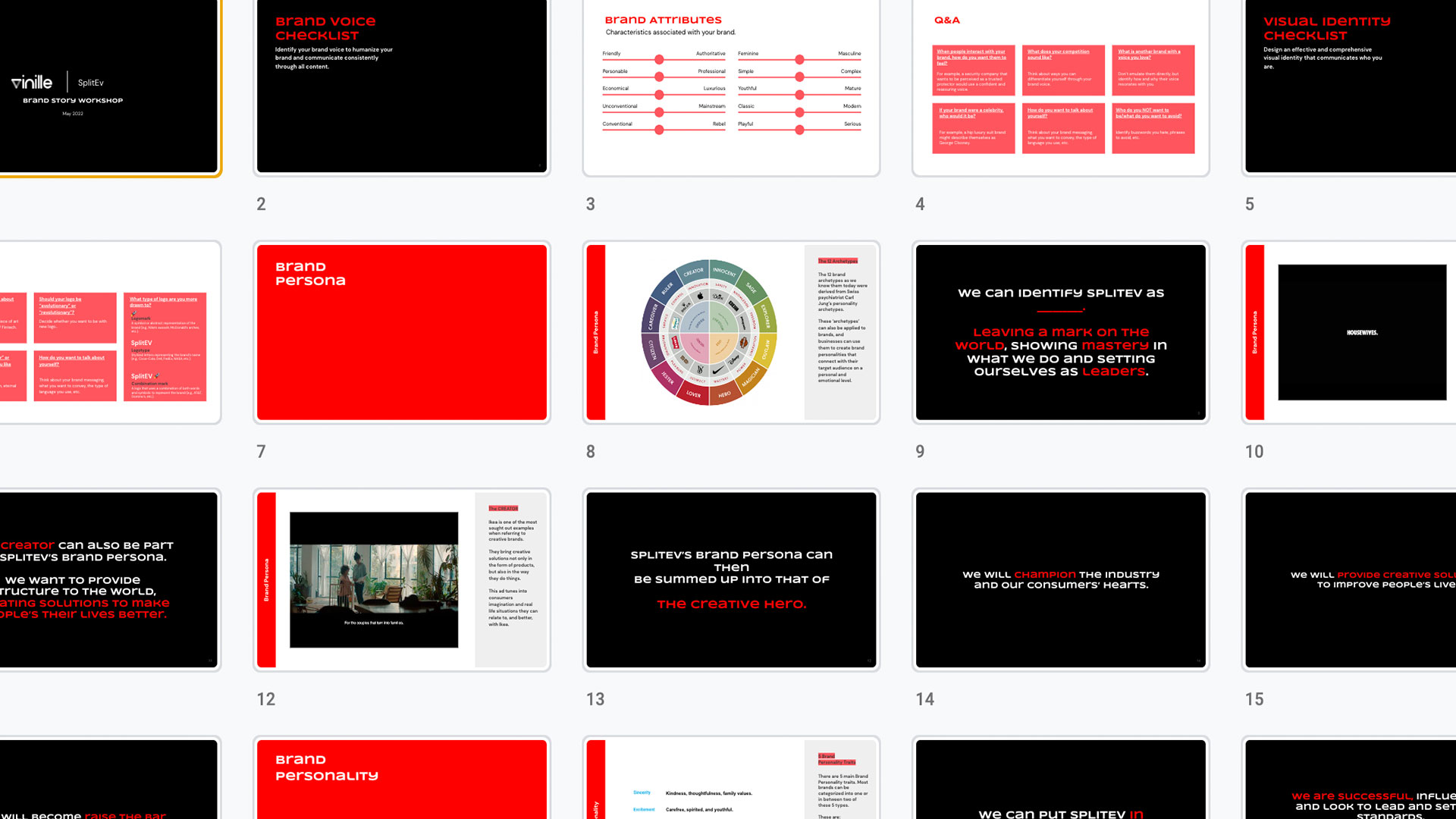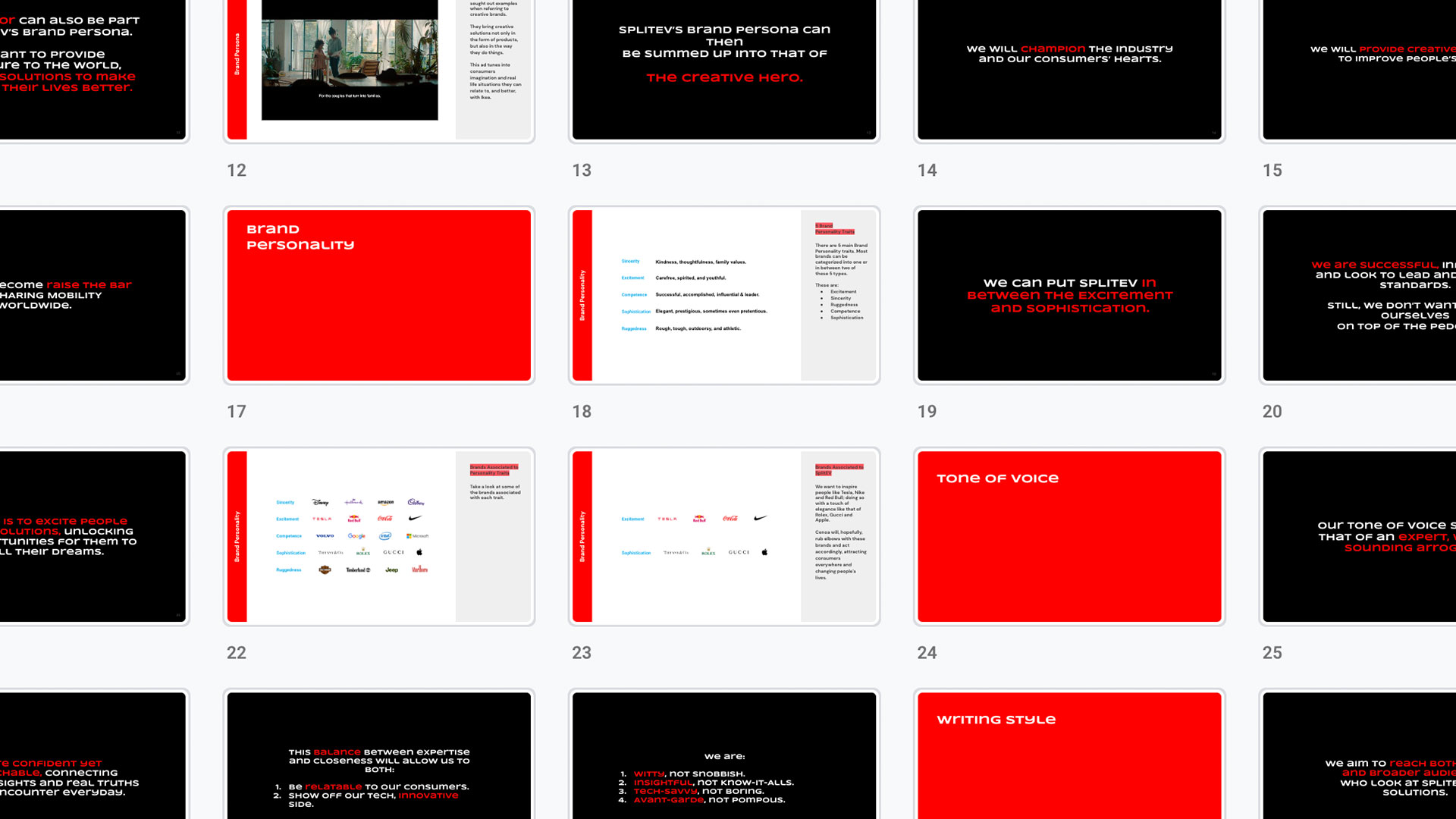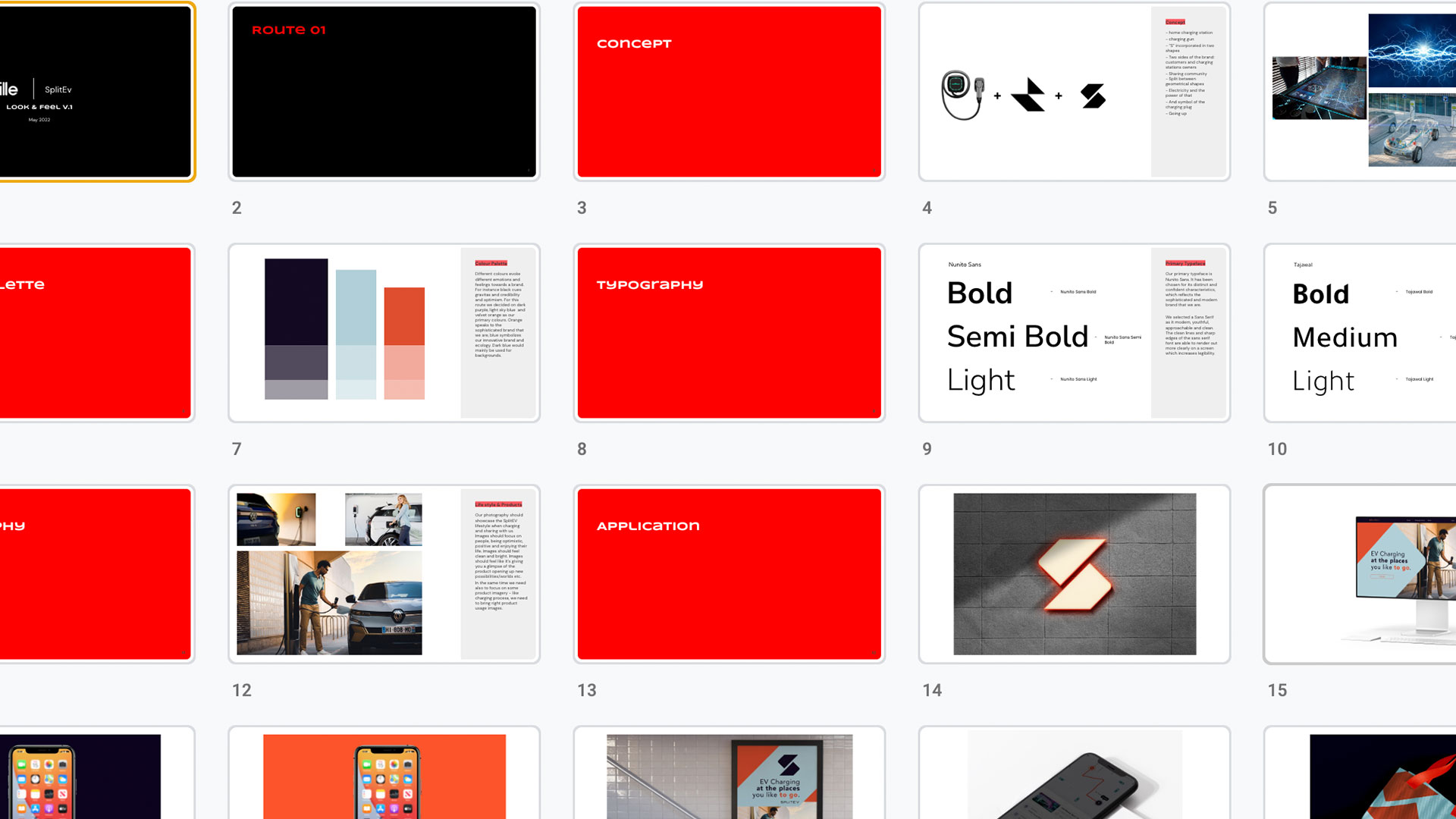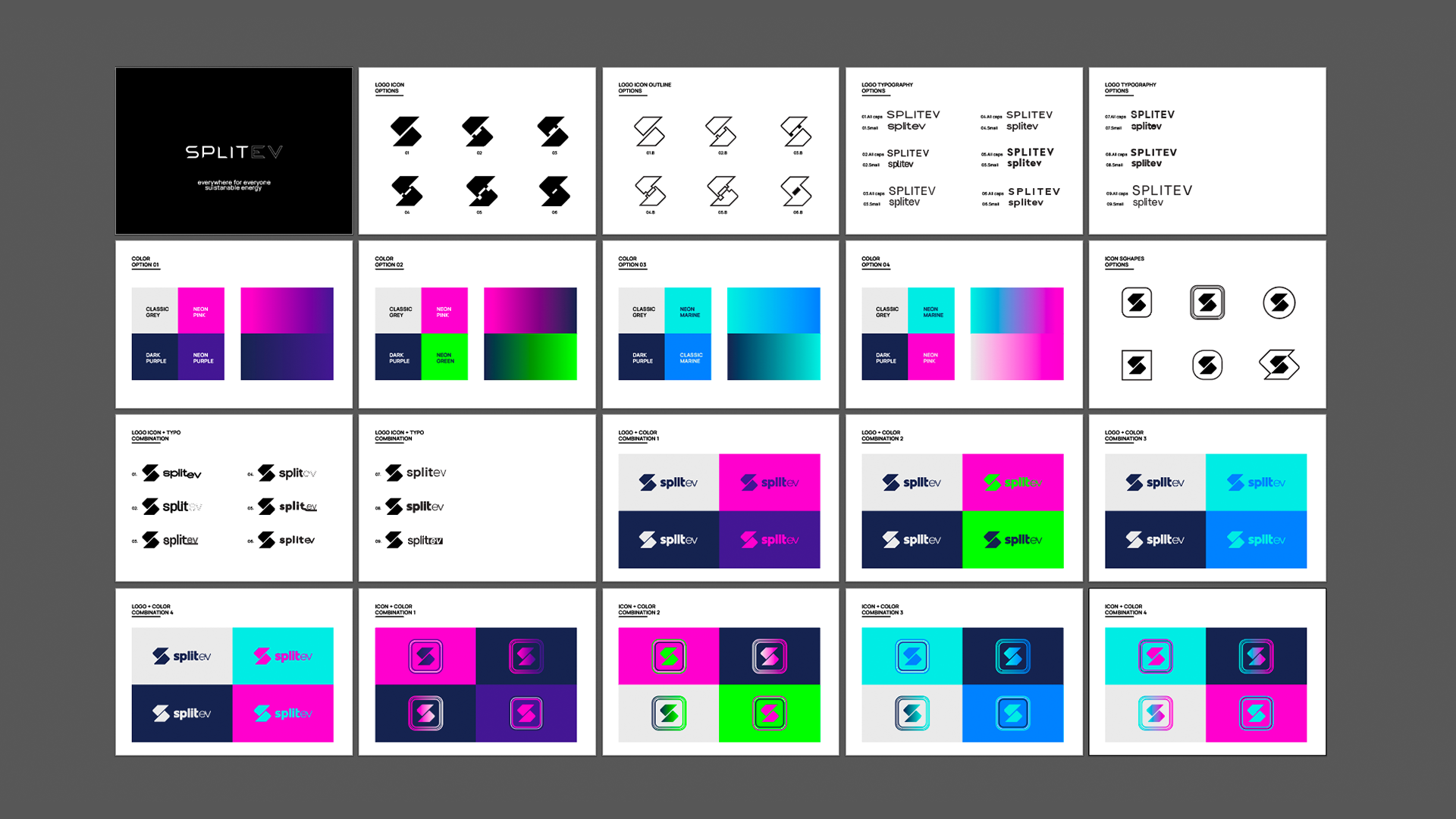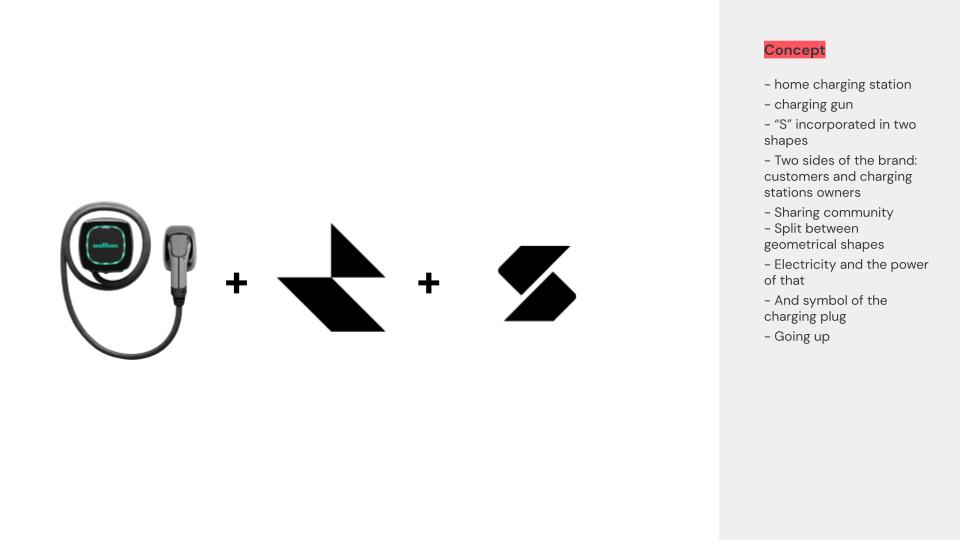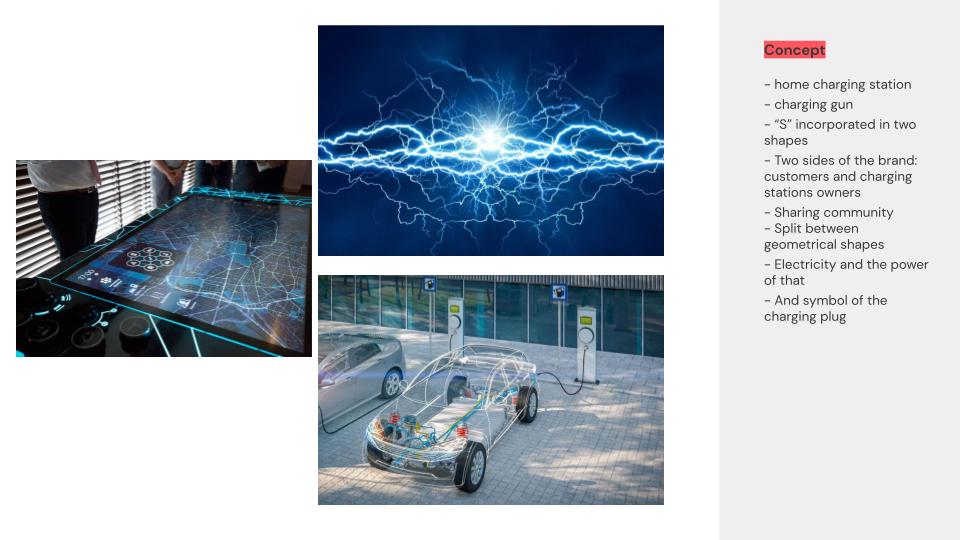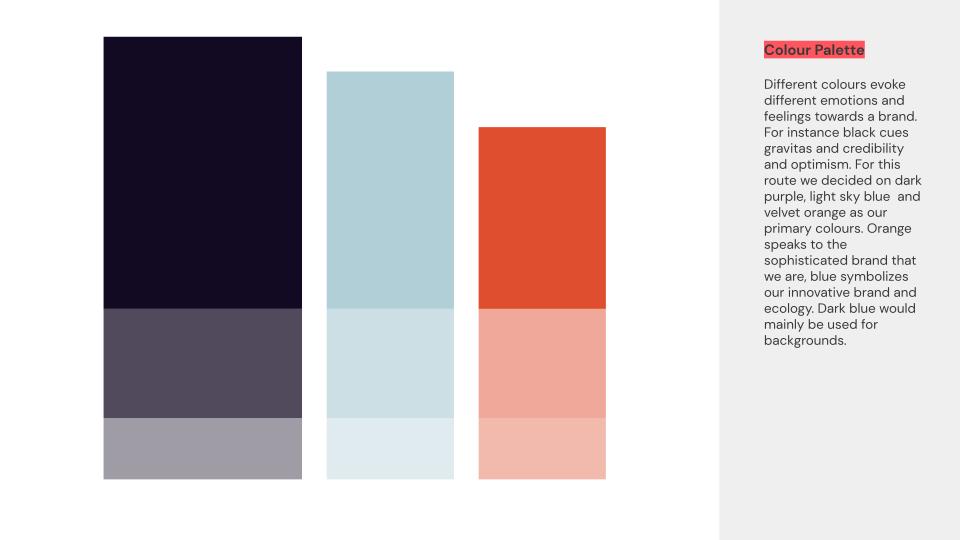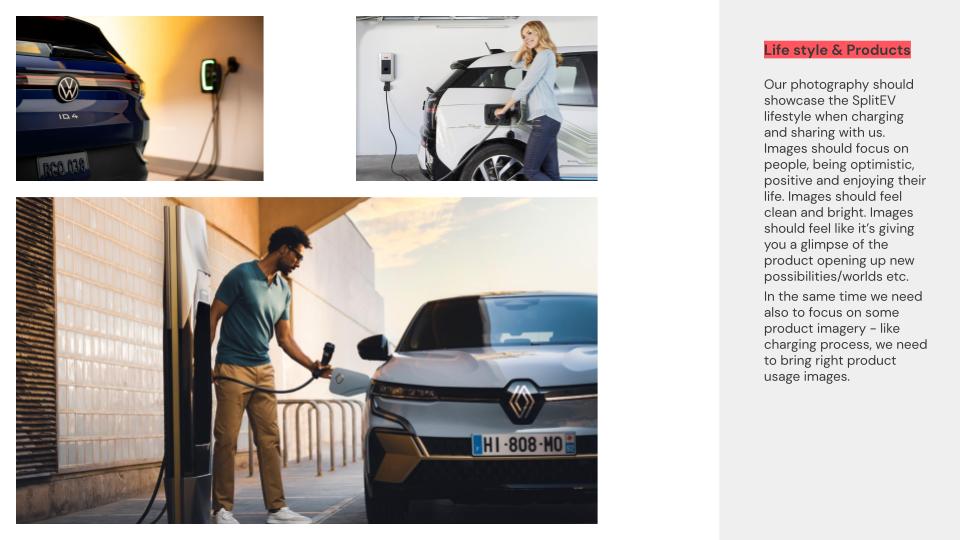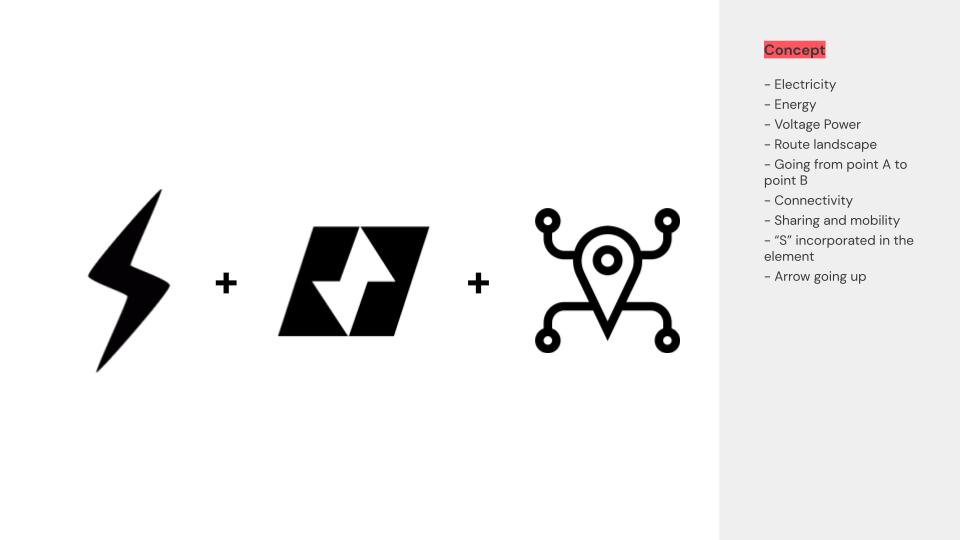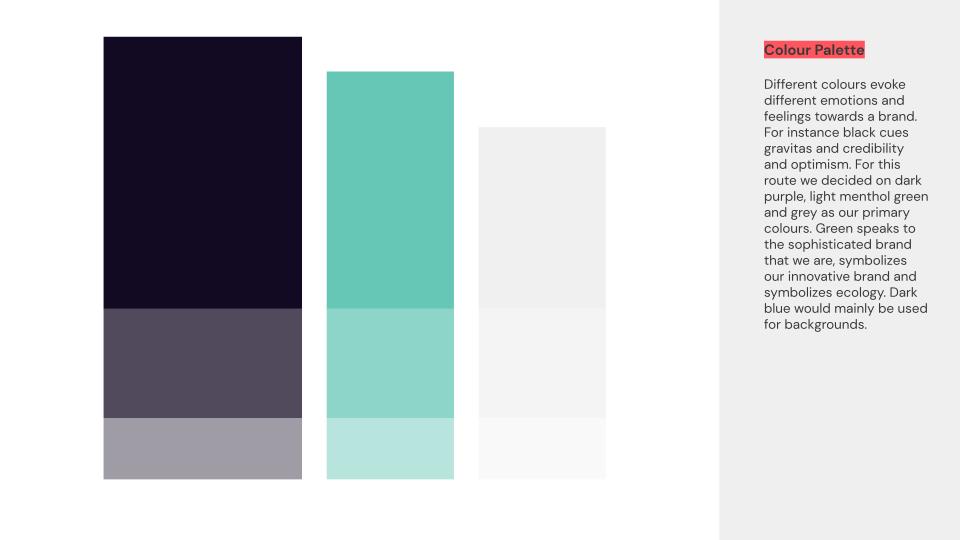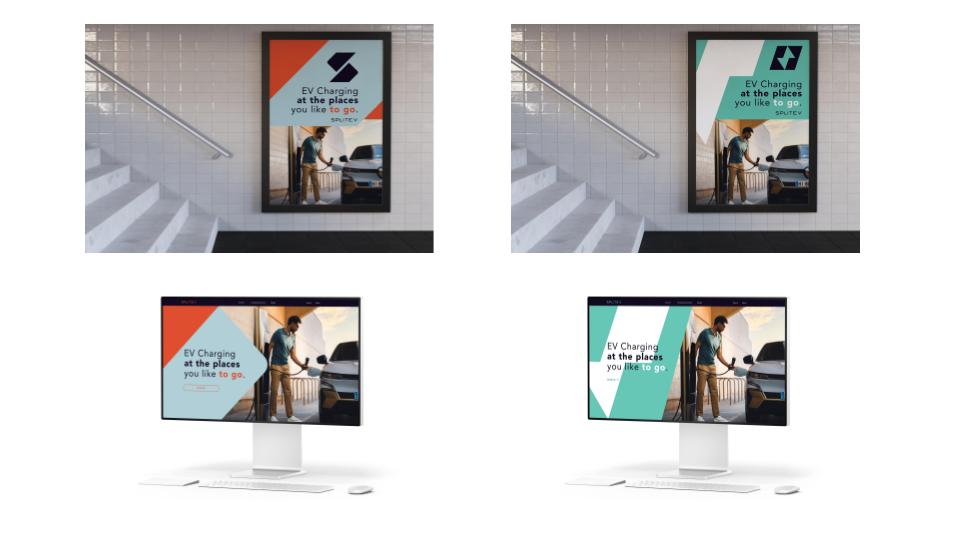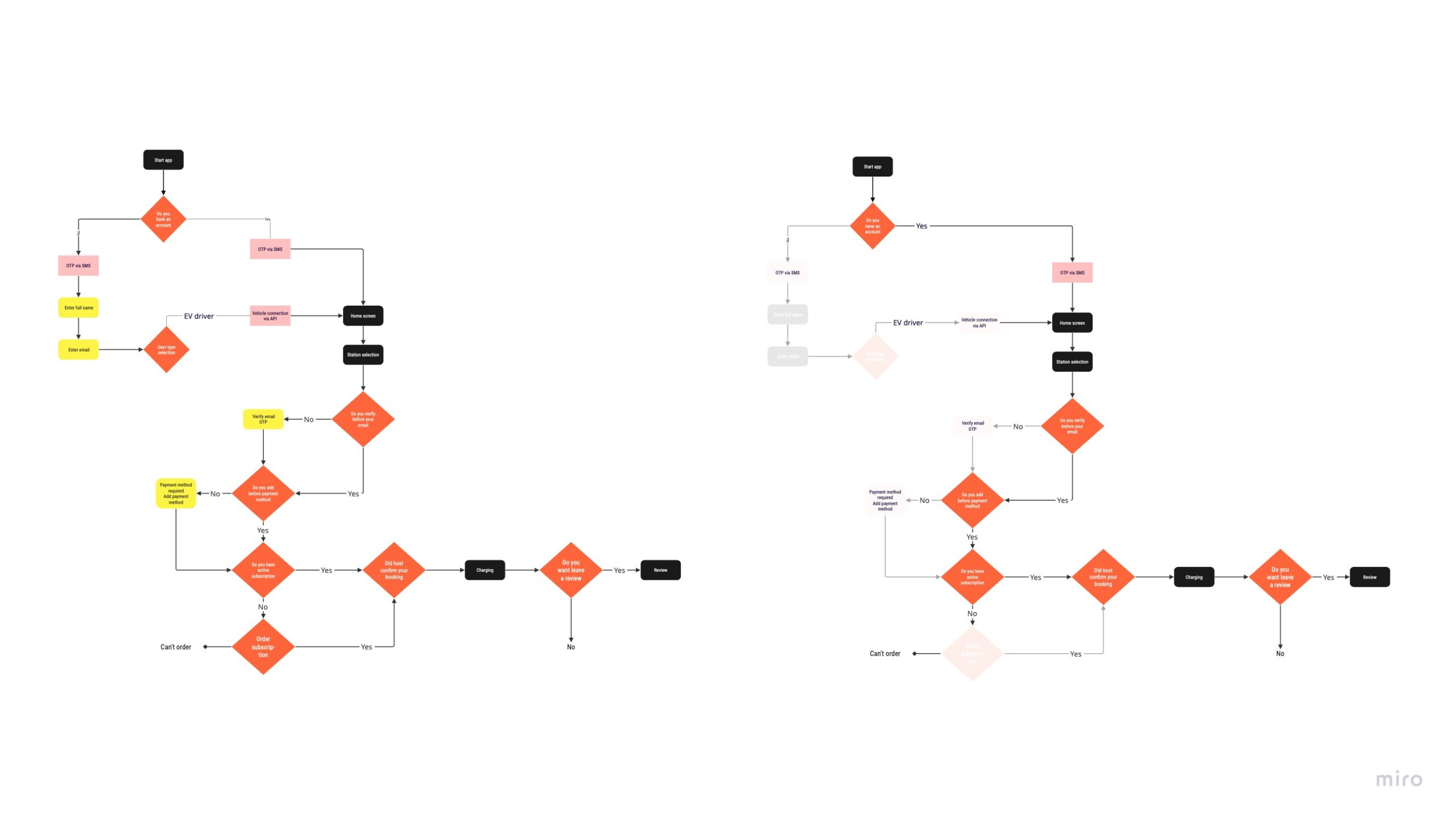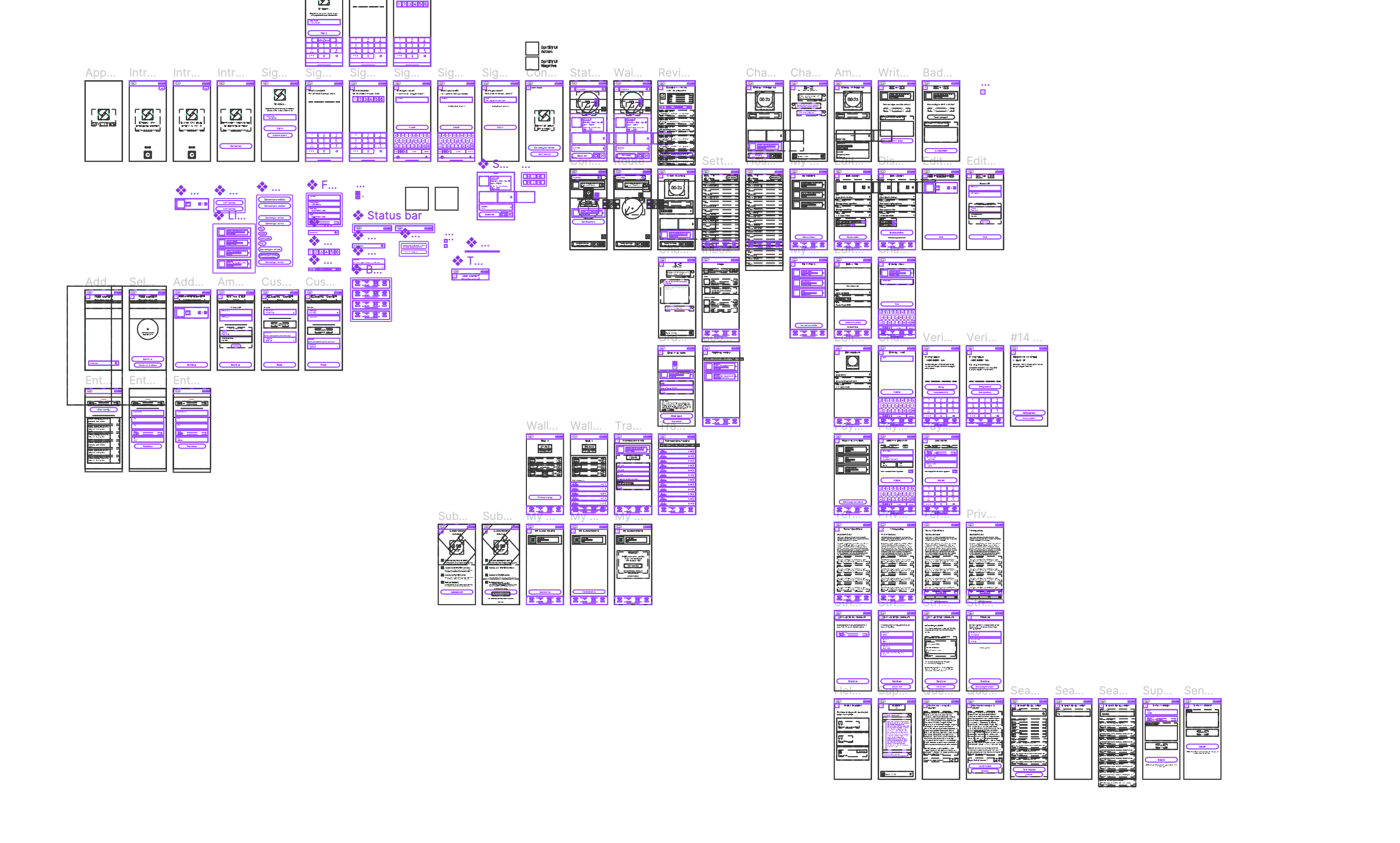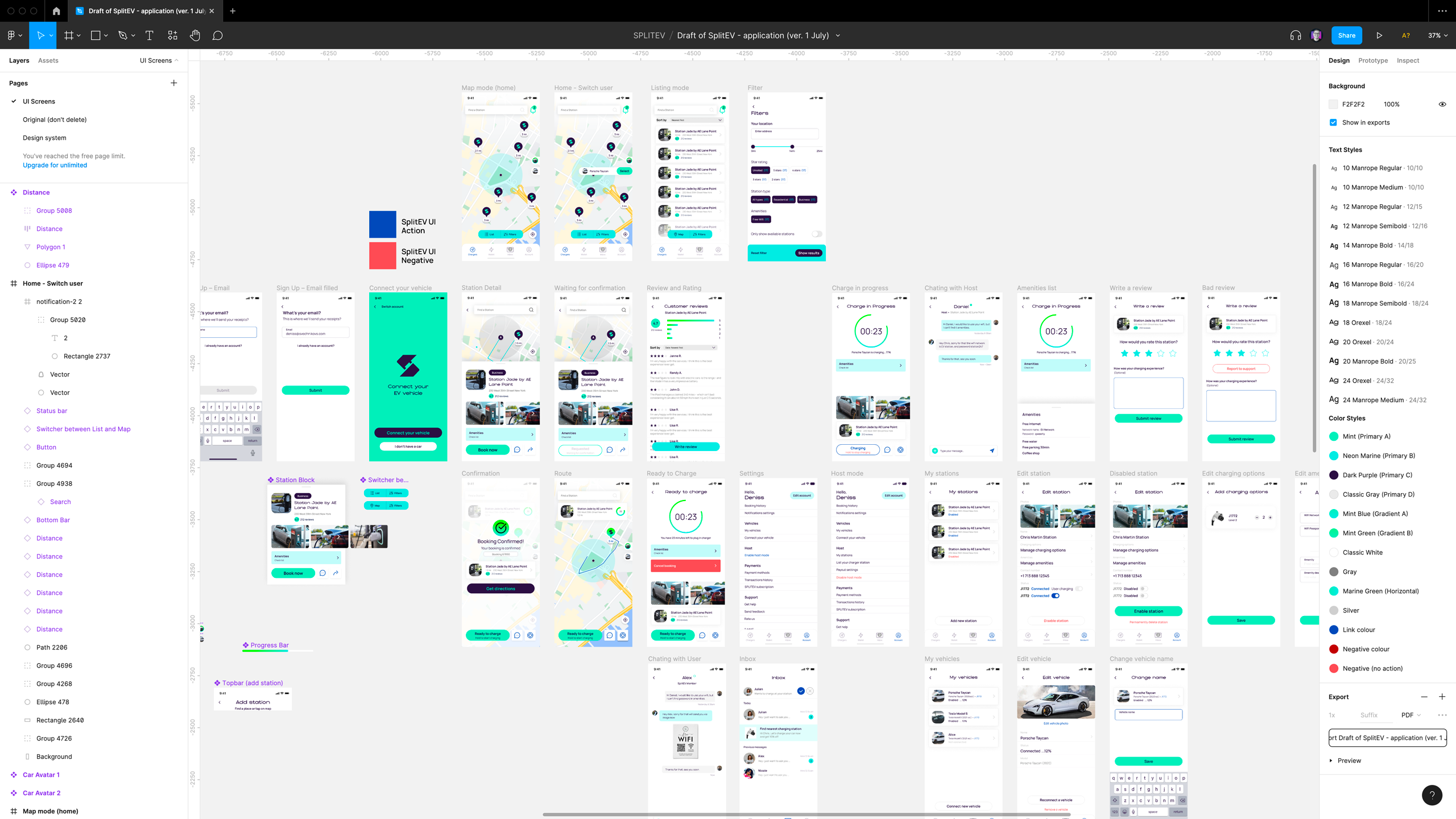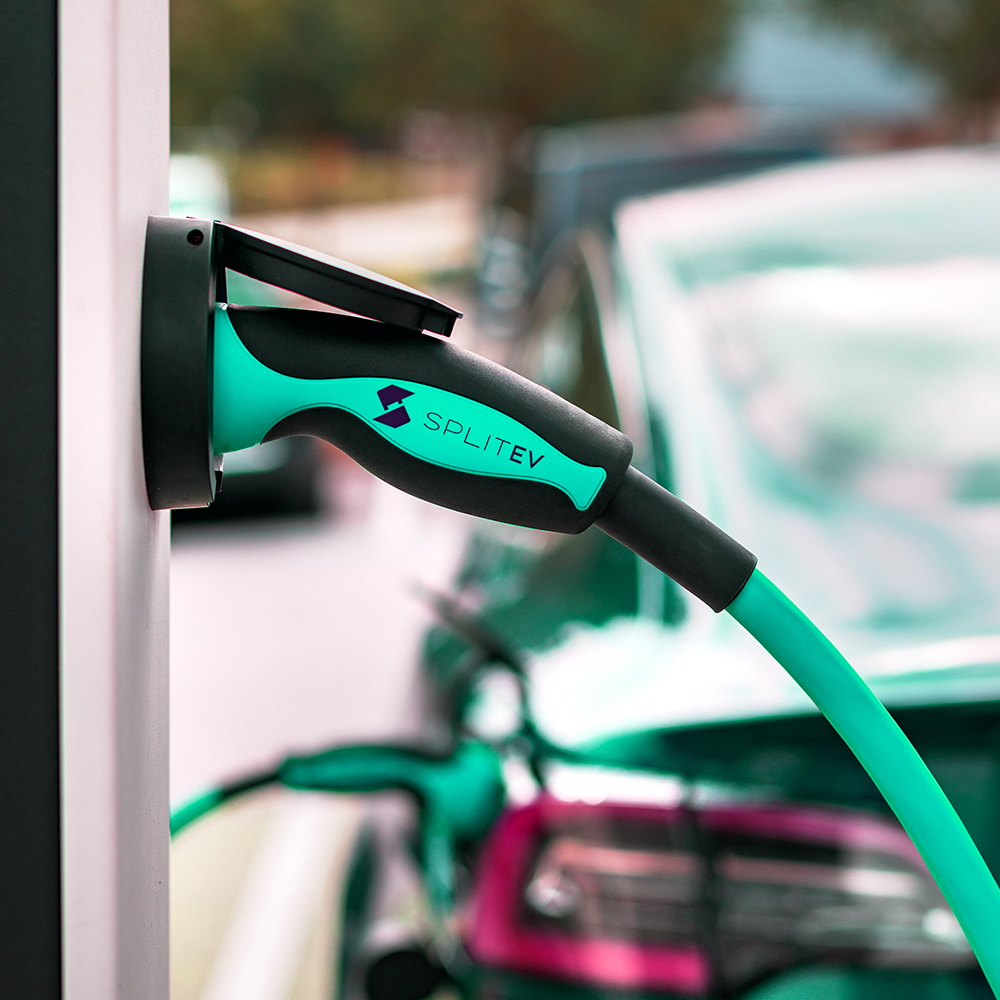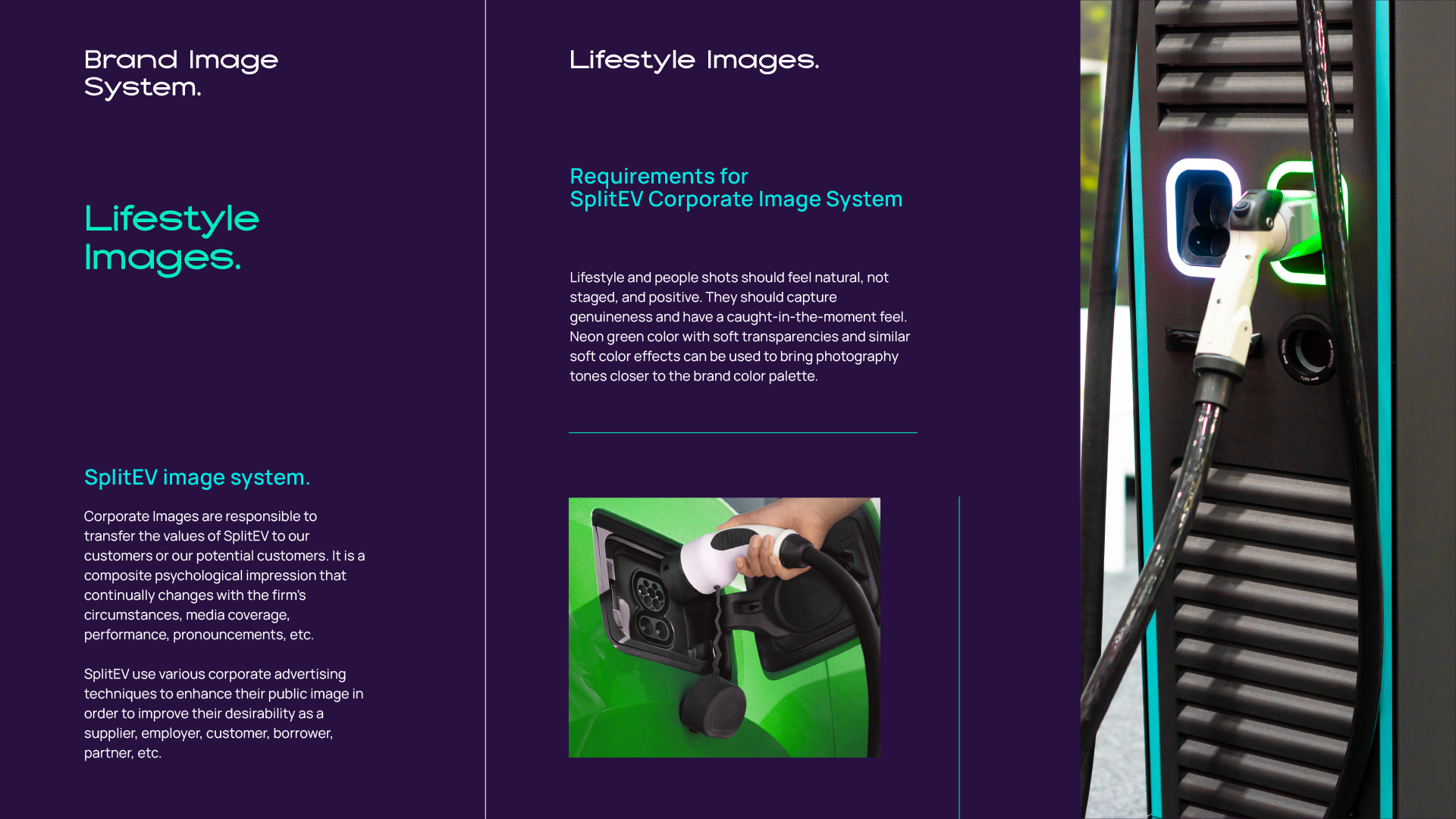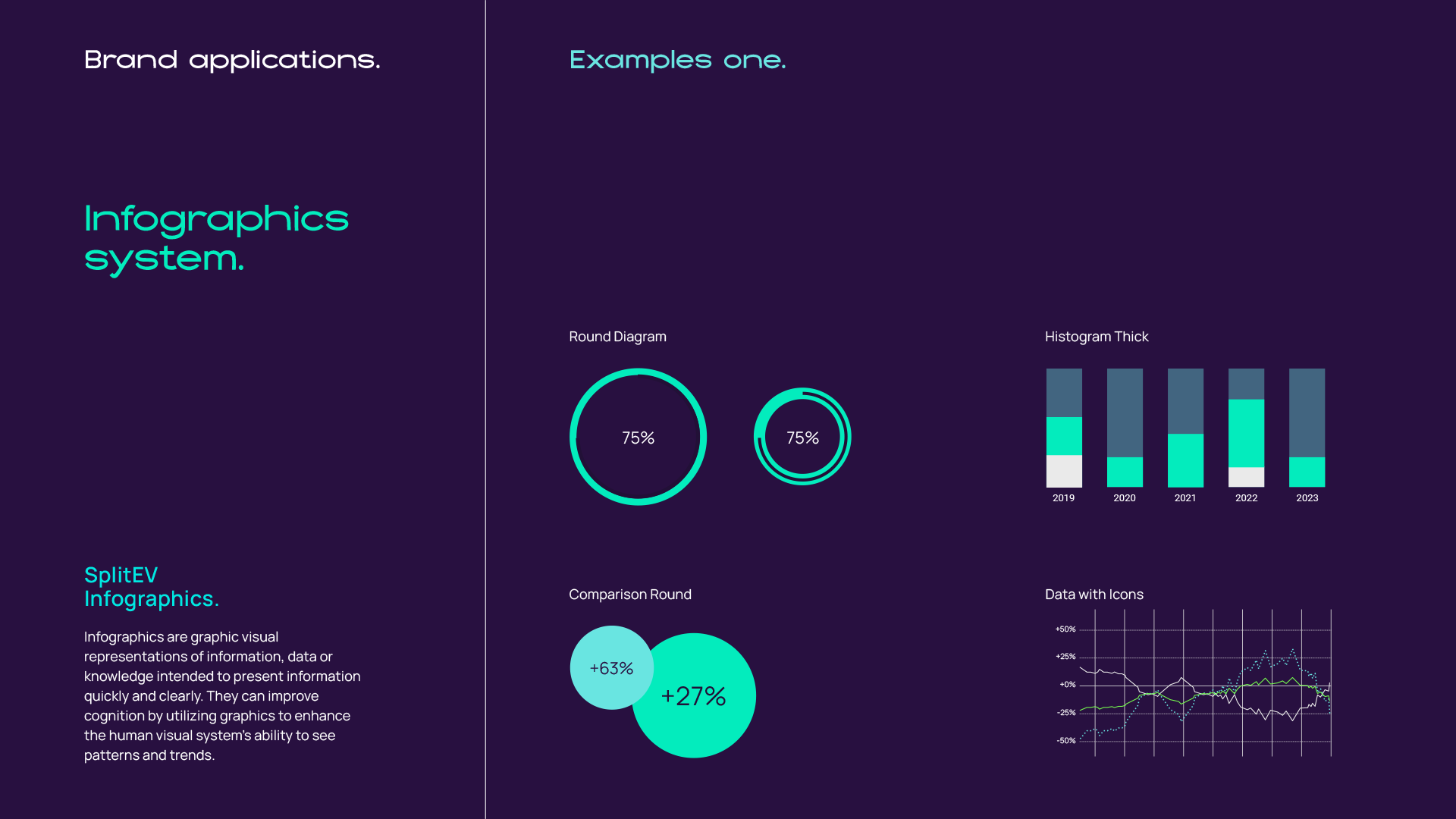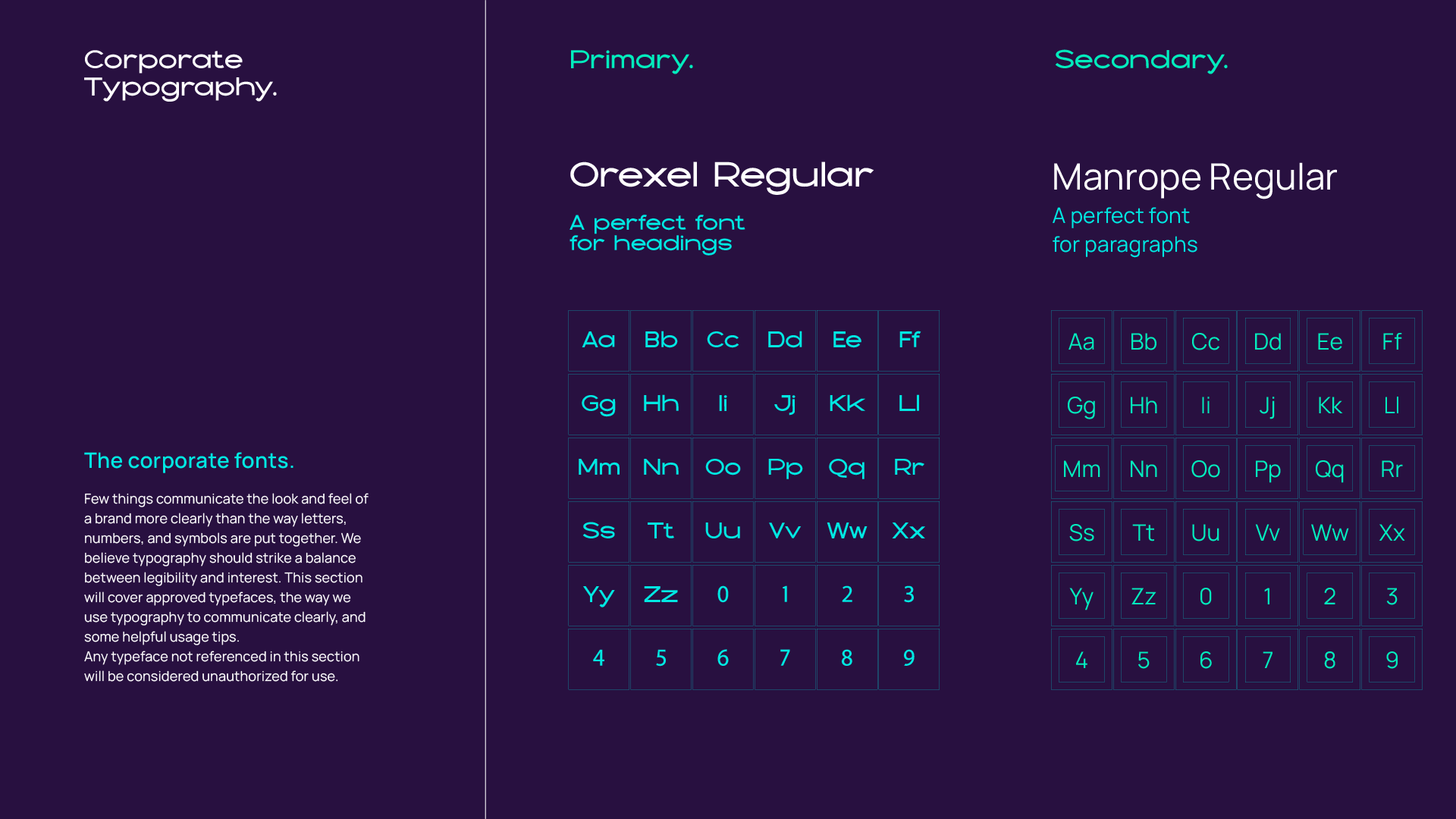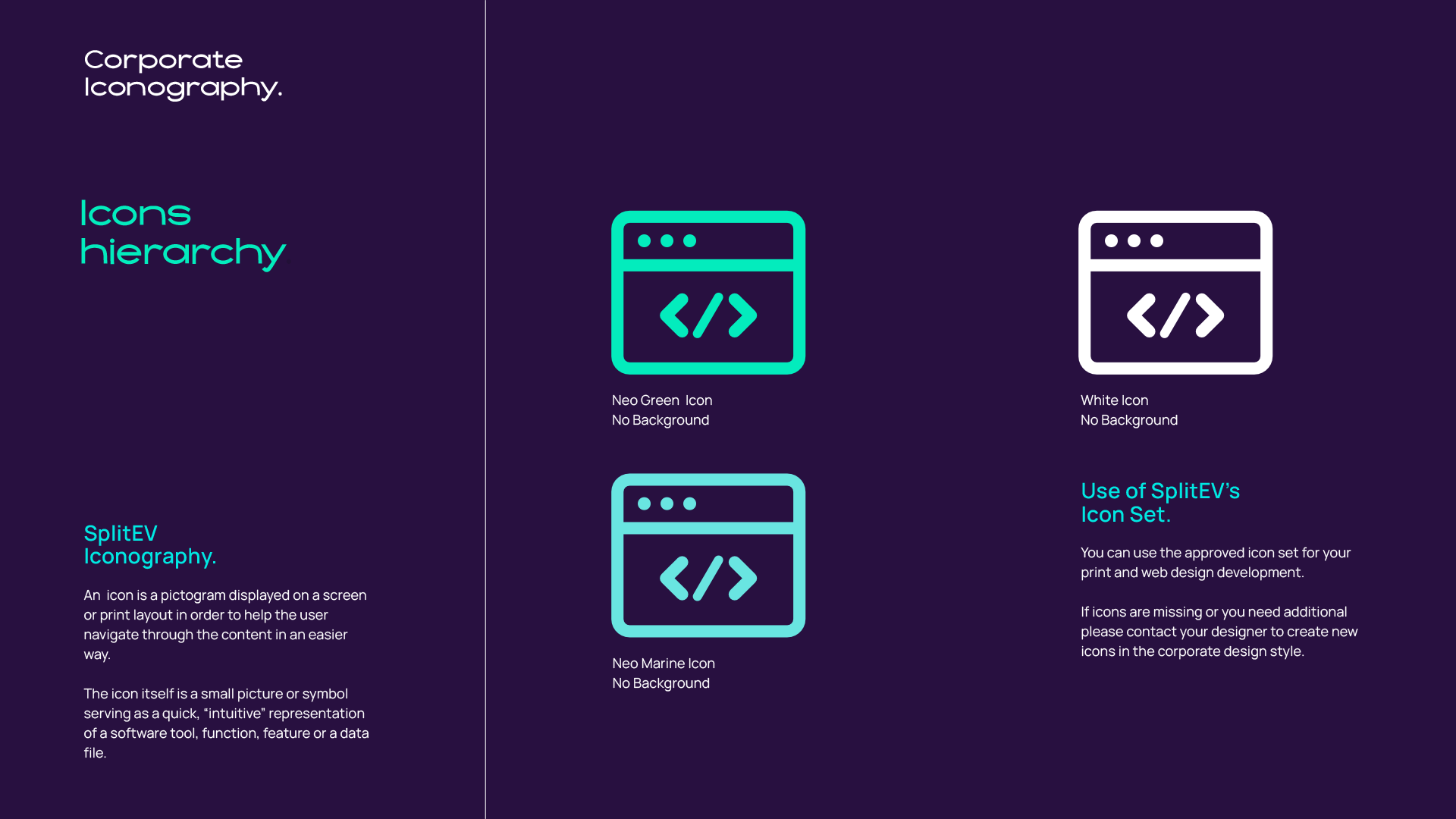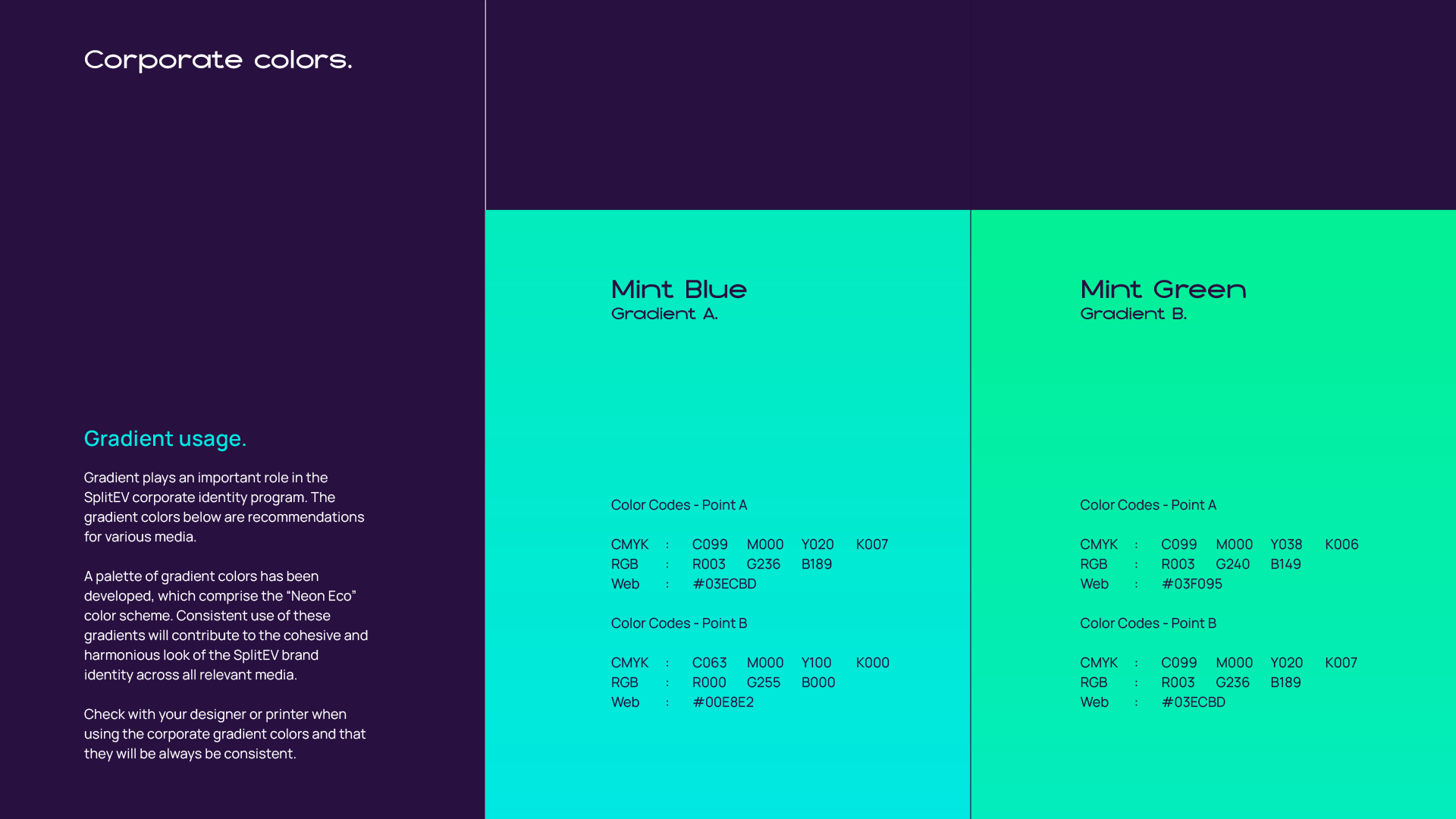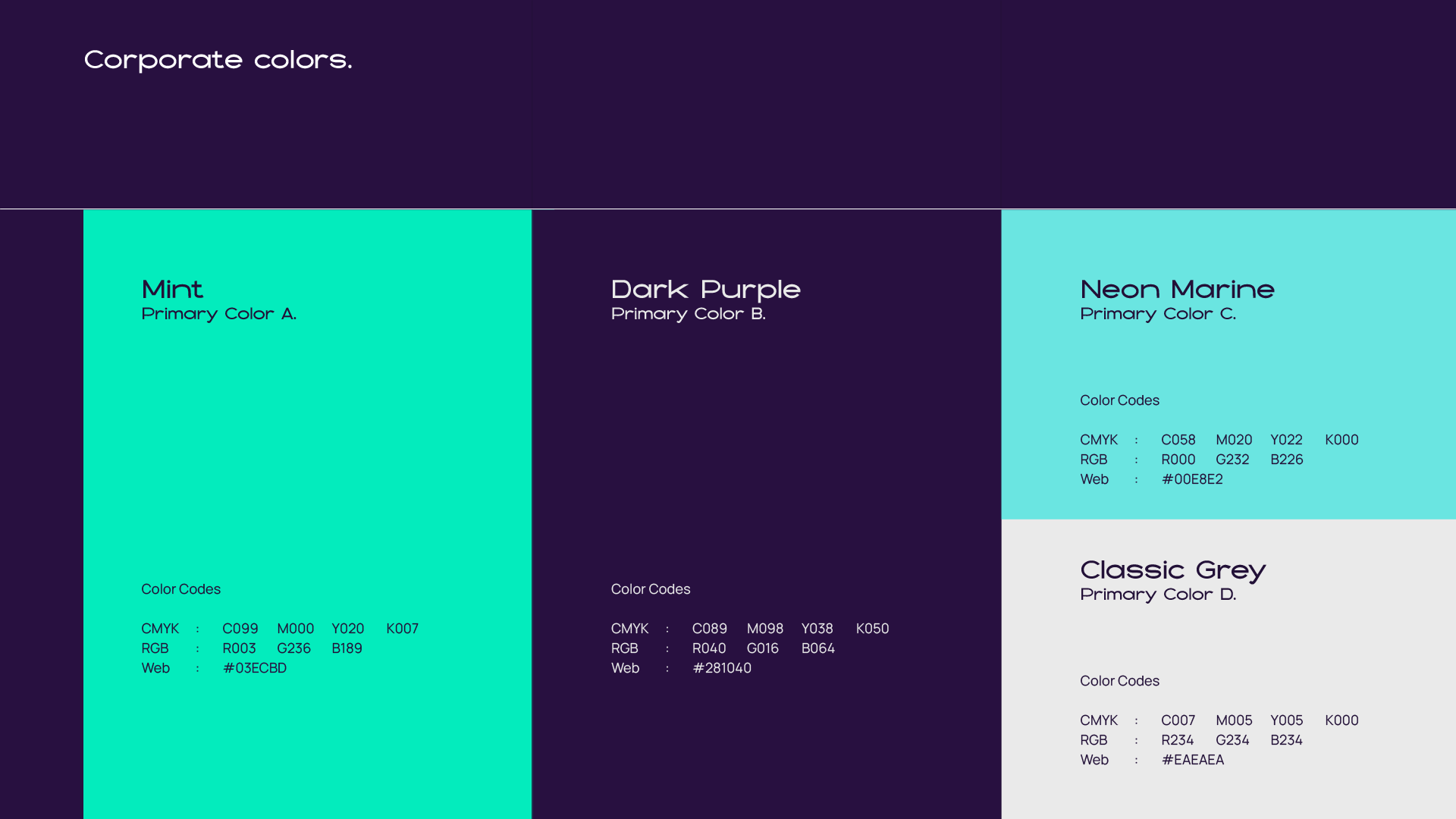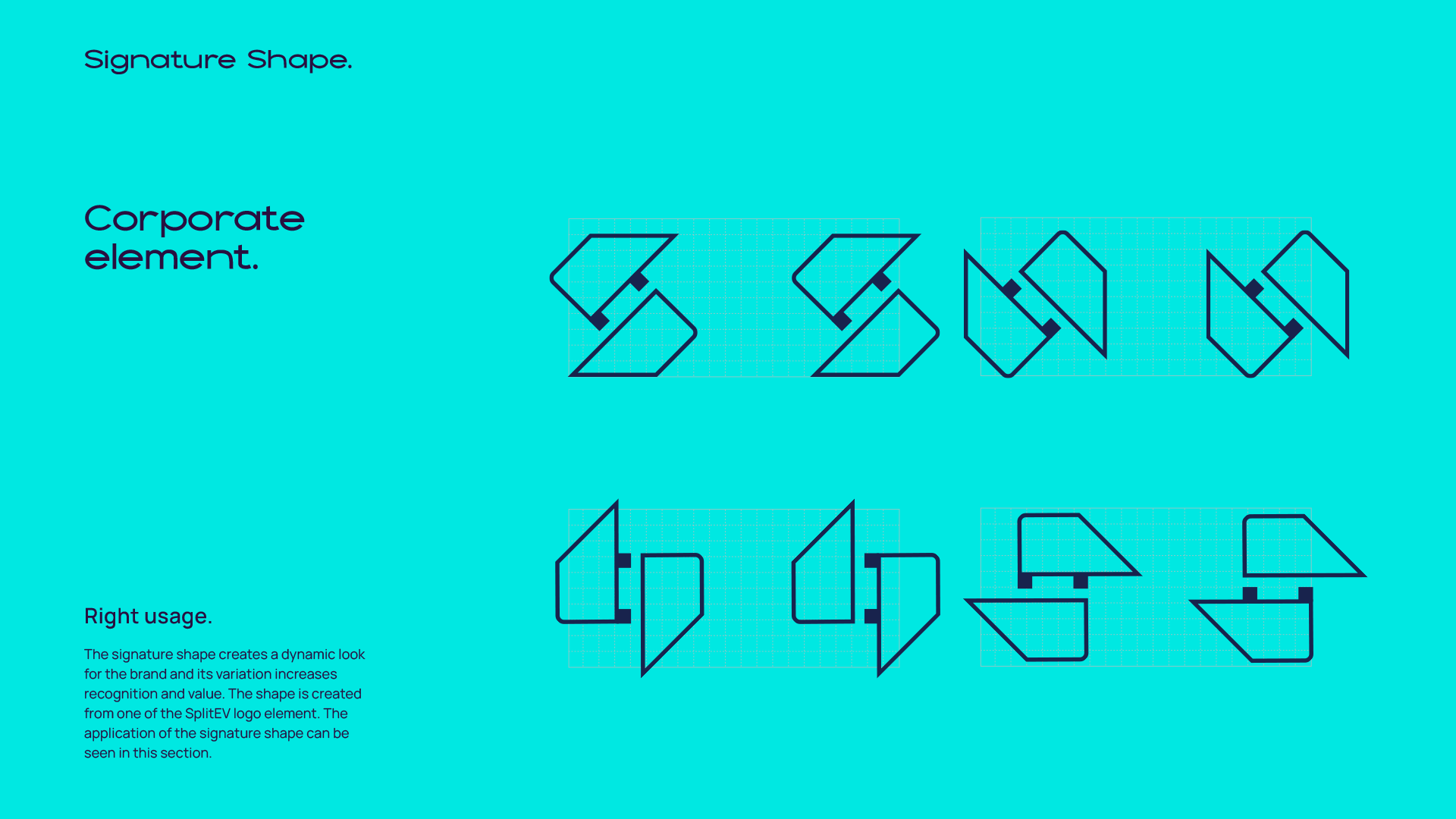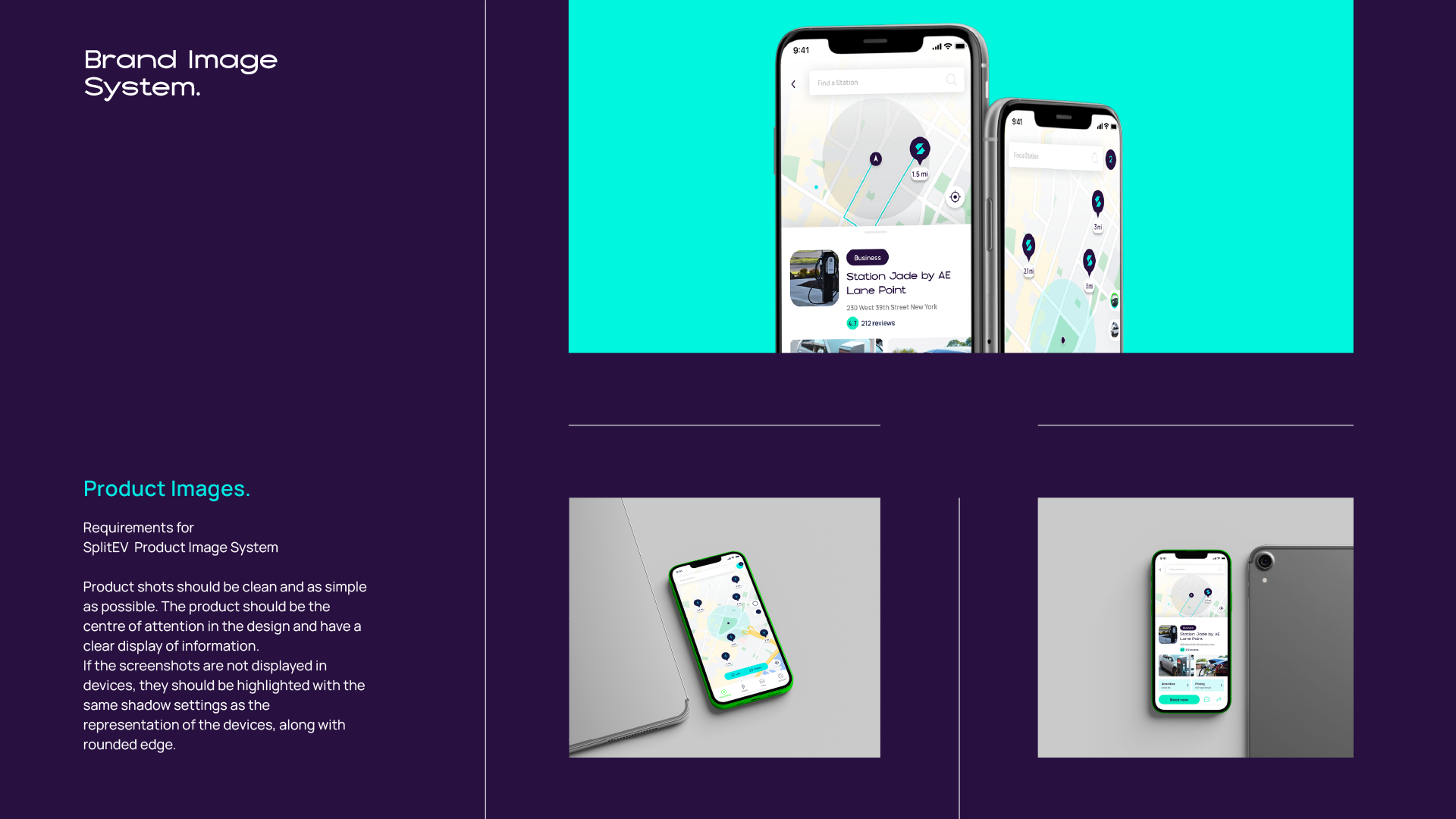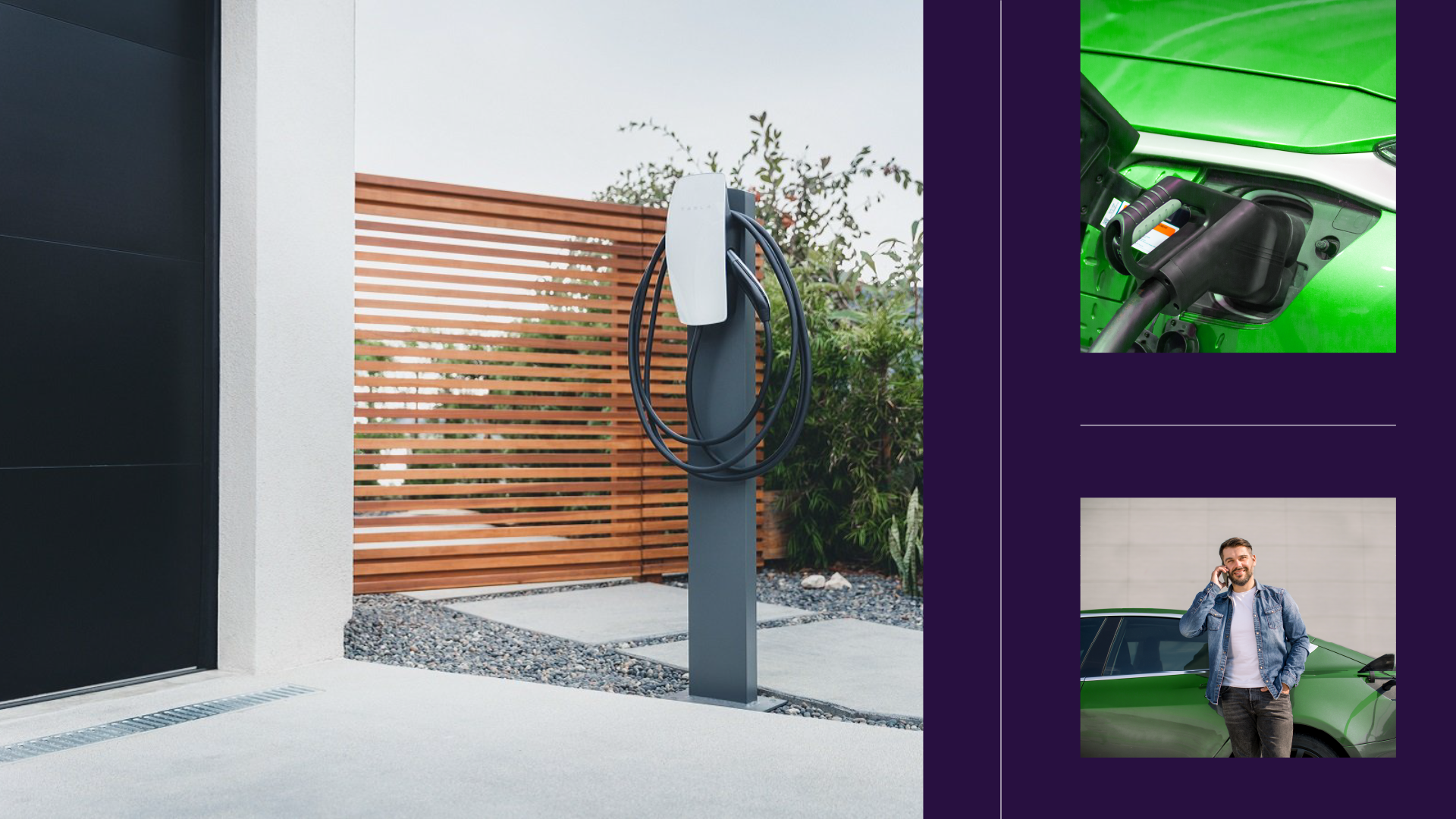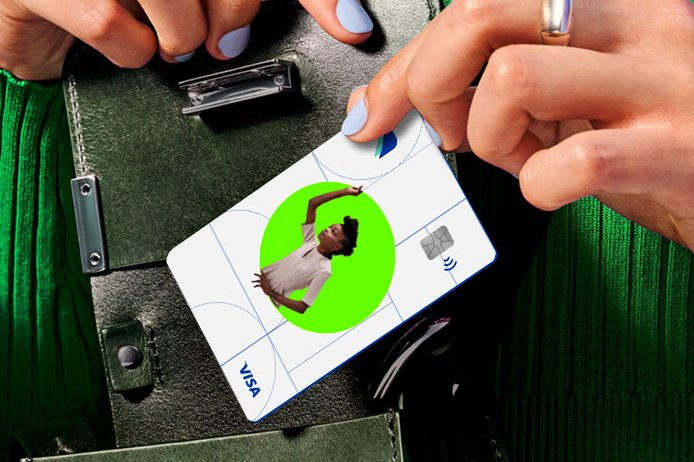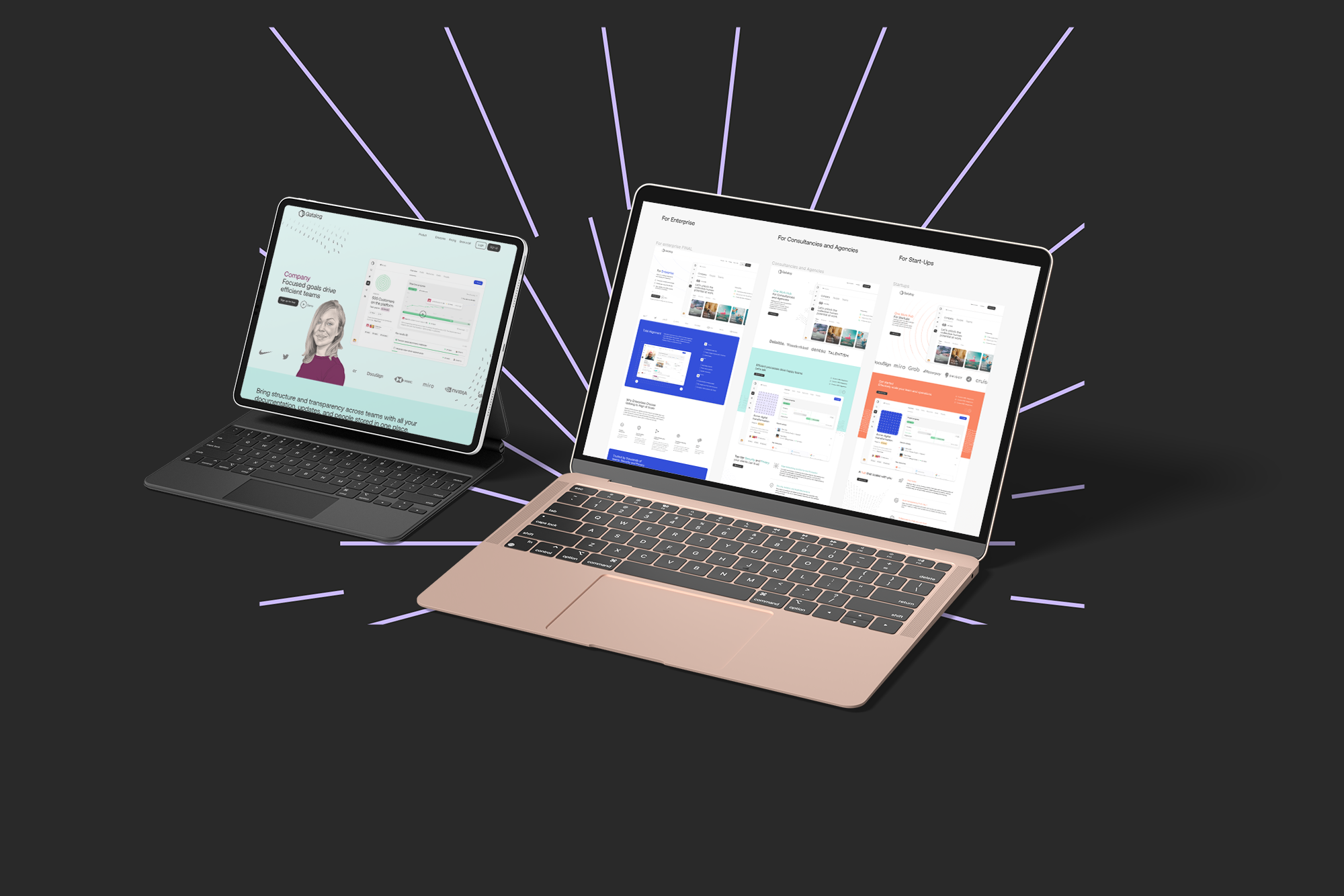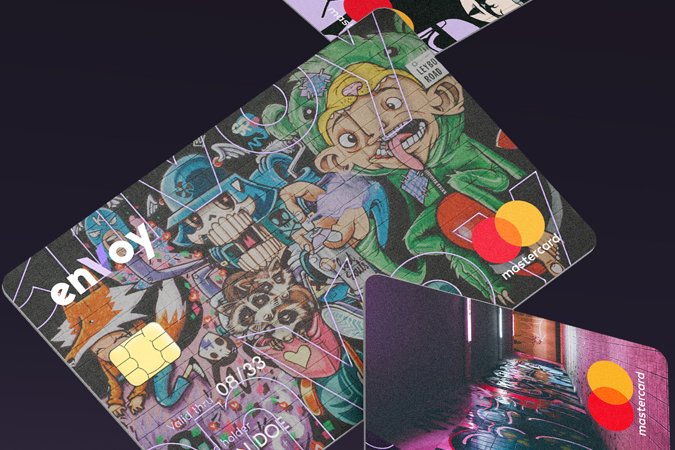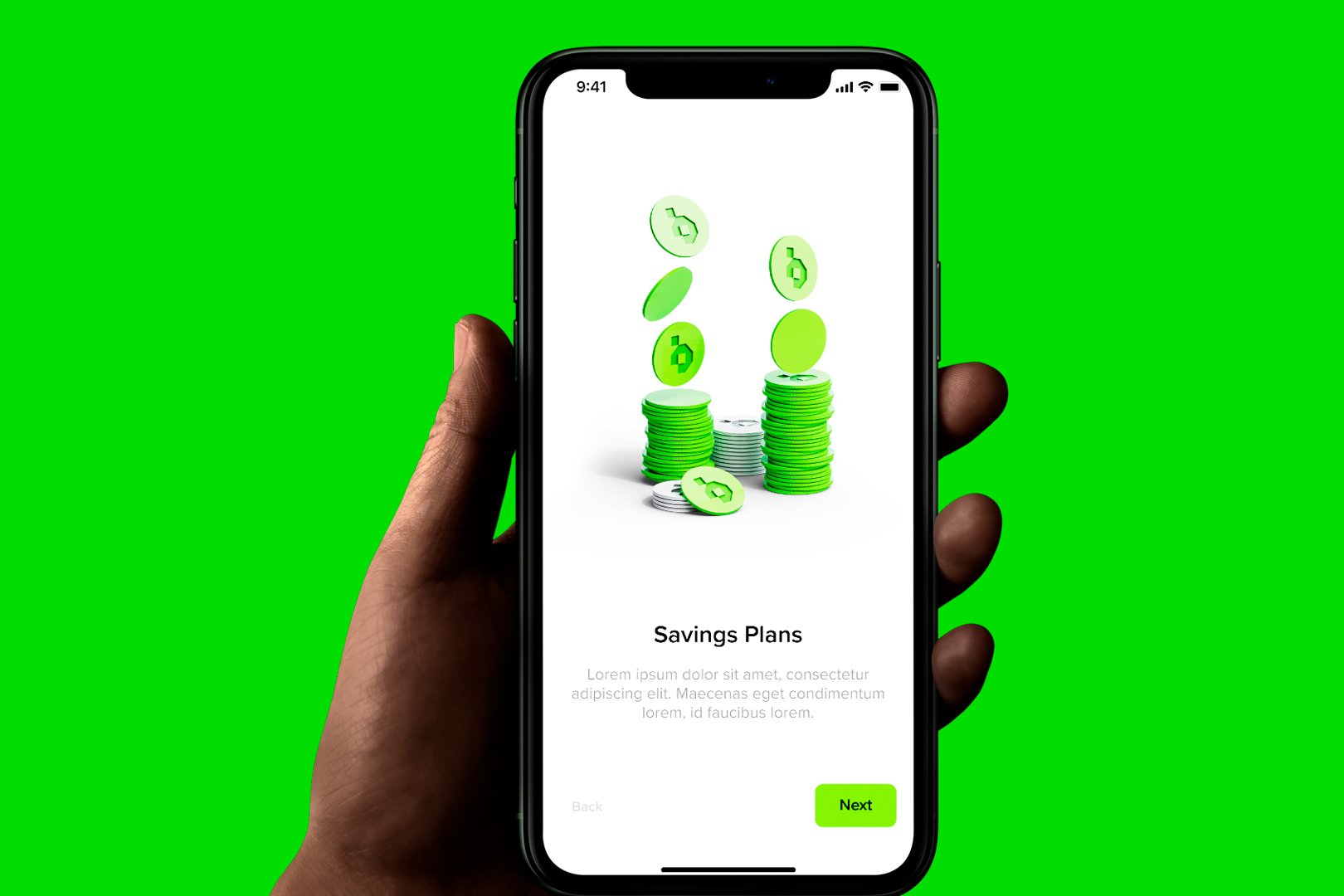SplitEV.
Building a Global EV charging ecosystem with community driven approach
Client
SplitEV Inc.
What delivered / Creative fields
- Branding system
- Communication design
- Stationery design
- UIUX design system
- Interaction design
- Interface design & prototyping
Role
- Design system development
- Visual guide creation
- User research
- Experience design
- Interactive interface design
Line of business
Mobility
Tools
- Figma
- Miro / InVision
- Adobe Illustrator
- Adobe Photoshop
- Adobe InDesign
The Beginning
It’s 2022 and it all started as a simple brief for a rebrand. The original first brand identity – an overnight rush job by founder Abi Odugbesan – had been outgrown by a business and community that were growing at phenomenal speed thanks to its innovative mobility & community model. This growth signalled something more – SplitEV didn’t just need a new visual identity; it needed a brand that could express the vision of its founders and guide and support its business through exponential growth and the future of the EV industry.
About the project
Monetizing electrical outlets to build a ubiquitous electric vehicle charging infrastructure. SplitEV seeks to create a ubiquitous electric vehicle charging infrastructure. They envision a world where charging your EV is as seamless as charging your cell phone: anywhere and everywhere. SplitEV is a peer to peer-based solution with a two-sided revenue platform that facilitates the process of monetizing privately owned electric vehicle charging outlets. On one side, it enables owners to monetize their electricity by listing their chargers for rent. On the other hand, it allows EV drivers to circumvent the hassle of navigating to sparsely located commercial chargers. With 1.6M privately-owned EV chargers across the US, SplitEV will provide widespread access to conveniently located charge points for every EV owner.
Client needs
SplitEV is a mobility-tech startup that rapidly grew into a serious player on USA market. Even though its products were state-of-the-art, their identity lagged behind, representing its serious and humble beginnings, as opposed to its cutting-edge technology. This put the company at a disadvantage within the international big brands in the sharing mobility industry. The passion of its founders and the industry hype: SplitEV was started in 2021 by Abi Odugbesan, a global operations manager widely regarded for his expertise in operationalizing innovation. Unable to find a nearby charging station along his daily commute, Abi discovered that this was a common frustration among many electric vehicle owners; thus, the idea for SplitEV was born.
Design Process
Following the model for the human-centered design, we started the process with user research and observation, creative workshops / immersions and strategy, and ended with validation. This process provided us with a roadmap and a solid foundation to base our design solutions on user findings.
To get a full picture of the heritage and essence of the brand, we immersed ourselves in the world of Electrical Vehicles and SplitEV. We went to the archives, spent our days at EV charging stations, did a charging of our Tesla, met teams and partners across the whole business and signed up for a some consultancies. And it became clear that SpliEV’s line of ‘anywhere to everyone’ was selling it short.
The Problem
Firstly, We began writing a Hypothesis & Market Problems, which helped to structure our research and prove or disprove assumptions. Electric vehicle infrastructure problem.
There are many apps on the market to look for EV charging stations and sharing options, from small startups to big established companies. None of these, however, address the needs of electrical vehicles owners and charging searchers. EV charging stations apps seem to be standard and without any user experiences.
We have experience in designing systems for different users and apps for private-sector in the United States and in Europe, and we made a bid challenge where EVs account for 2 different users – EV drivers and EV chargers owners. In this way, we have identified principles that could help determine whether a charging infrastructure can both meet drivers’ needs well enough to enable a broad shift to EVs and be built and operated in a sustainable way, involving a combination of viable business opportunities.
- 25%. 520,000 EV drivers do not have access to a home charger! Many charging locations are private, inaccessible, or desolate locations.
- 70mi. The average distance between the charging station. Electric Vehicles have short-range and variable charging locations are needed.
- 2.2M electric vehicles require a charge at least 3x a week.
- 600 thousand – outlets are needed to support EV adoption & demand.
Research
Market adoption.
- SplitEV will rely on data analytics extensively to optimize its marketing efforts.
- Maximizing marketing efficiency is critical for growth in competing against other charging alternatives such as ChargePoint and Blink.
- We can segment customers based on a range of variables, such as lifetime value level, geography, charging styles, or what time of day they prefer to charge.
- SplitEV can then use that information to tailor its communications with customers.
- In addition to the financial benefits for both Hosts and Drivers, we are seeking to reduce friction by making it easier to sign up. This involves installing our own level 2 chargers at preferred locations which will allow us to provide hosts with more back-end support and analytics.
- Building up America’s network of charging stations could make EVs more appealing to more people and thereby accelerate their uptake. That will help abate GHG emissions, in line with the nation’s goals. States and companies that want to develop EV-charging infrastructure could do so more effectively by adhering to the principles described here.
Market validation. Market size.
- 23,000 Blink privately listed stations.
- 26,000 Charge point privately listed stations.
- 420,000 – prognoses SplitEV founders.
- $906B. Global EV market projected to reach $906.75 billion by 2028.
- 18 million EVs in 2025 in need of a recharge.
- The US electric vehicle market valued at $208 billion in 2021.
Key Findings / values:
- Accessibility – Charging stations’ availability at places where drivers would park anyway, such as shopping malls, restaurants, grocery stores, etc., where it takes only a few seconds to plug in, encourages drivers to use a public charger.
- Convenience – EV chargers are usually nearer to the entrance of public amenities; thus, drivers receive preferential treatment.
- Lack of access to at-home charger – Drivers who do not have access to a charger at home or at work must recharge at public charging stations.
- Running out of batter range – Drivers who exceed the range of the vehicle battery on any given day need to visit a public fast charging station.
Competitive Analysis
To understand were our product will stand in the market we decided to carry out a competitive analysis. This will help us to understand the strengths and weakness of competitors and to inform our design directions and decisions.
Creative workshops & Immersion
Immersion workshop with client made a fully understandings, how the brand should looks like, what are the problems and values, who are the real target competitors and also defined the SplitEV solutions and what problems on the market they are solving.
We made 3 different concepts with core elements: Swiss Minimal Style, Conceptual Style, Futuristic Style. Each of the concept with own style, preferences and look&feel. Everything was based on a client preference after our creative brand workshop. Then we finished with 2 routes with own style, colors, typography and rationale behind it.
The first step was to overhaul SplitEV mobile app, working through millions of screens to radically simplify the information architecture. We took inspiration from electricity and mobility apps, and insights from partners and internal teams to ultimately restructure the information architecture around the core needs of the business structure.
The content strategy, art direction, experience and structure of core pages were redesigned – from the functional to the inspirational. This resulted in higher value content that customers could find more easily, further amplifying the reasons of using SplitEV. Then we moved to the Brand Identity system creation.
Architecting the system
Electrical Vehicle charging solution could be described as a plug who is connecting car with the charging station. Or, to put it briefly, a movement and easy accessible Plug. Therefore, it also resonates with SplitEV’s aim to represent the constant movement forward, leading to the future. As a result, we created a meaning for that process of ‘shifting’ by implanting a plug connector into the logo icon and colors what represents the future, movement and electricity of green energy feelings. That’s how a forward movement becomes an essential element in the new direction among the bold, simple visual language. All this is based on big research work, A/B testing and focus group.
User Flow / Wireframings
Since March 2022 SPLITEV product & marketing team work on new interface, completely rebuild previous drafts and hi-fidelity prototypes, that became outdated as they don’t have a rationale and user experience expertise. The biggest challenge became new user flow adaptation.
While first prototyping, the app user flow was oriented on minimizing required steps for recurring (registered before) users. First SPLITEV agreed that filling passwords, and usernames should be remained in Web 2.0, that is why product team oriented on phone number linking and OTP SMS each time when user enter to app, in future options for biometric pass will be delivered too. Payment processing companies such as a Stripe, Square require a lot of information: full name, verified email, and card/bank details. To make attractive for user experience, this step was integrated in different flows, for example full name, email in account registration, but email verification added in first purchase module. The App users can see app features, and discover it before finishing their verification, this SPLITEV product team hypothesis that it’s increase trust and loyalty to brand.
Design Guide & Visual System
Final Deliverables
“Shared mobility services have now become firmly integrated into urban transportation systems across the globe. People have been sharing their homes and renting out vacation homes – that’s been around for a very long time but this idea of selling your electricity to a stranger is completely new. That’s while we created SplitEV and looking at this brand, I suddenly realise everything is now expressed with that.”
— Abi Odugbesan / Founder & CEO, SplitEV
Summary & Impact
It’s an EV icon. Perhaps most importantly however, the brand enables SplitEV to adventure, explore and do a whole lot more in the future.
The SplitEV rebrand trended on Collision conference in Toronto. It also helped to propel SplitEV’s valuation and get funding’s in 3 months. As SplitEV look to fully roll this out across their ecosystem this marks a transition into an ongoing user centred testing process that continues to drive improvements to both the design system and the implemented experience which carries on today.

